

The Journey Method: Your New Secret Weapon for Remembering
Anthony metivier.
- August 27, 2023

It’s a great tool.
Once you understand how it works, you’ll enjoy legendary memory skills.
This is the technique people used to memorize entire books when they could not carry them on their backs.
So if you’re studying for an exam, learning a language or just want to stop forgetting things , this tutorial is for you.
Let’s get started.
What Is The Journey Method?
Put simply, it’s a means of associating information along a walk that you remember well.
It’s powerful because the mind works like this on autopilot.
Think about the last time you moved.
Did you have to memorize the journey from your bedroom to the kitchen? Probably not. Your brain absorbed the path easily and naturally.
Now extend this fact to a walk through your neighborhood.
And not passively.
Think about that walk in as much detail as you can muster.
If you think about it, you can probably recall all the major intersections, as well as many minor ones.
You can also probably think of a few traffic signs, mail boxes, fire hydrants and other items.
These are what we sometimes call loci or “ memory spaces .” The Journey Method uses such features of a walk you can take with your mind.
On, beside or interwoven with these spaces, you place associations that help you recall information. Like I discuss in this video tutorial:
A Brief History of Journey Systems
It’s not entirely clear when people first started using journeys to help them remember things better.
As Lynne Kelly has demonstrated in The Memory Code , this practice is prehistoric. One tradition we’ve come to know about in some detail is the use of Songlines. These journeys were often combined with physical objects that helped people remember. Please listen to Tyson Yunkaporta for more detail on how this works.
In the Greek tradition, we find a focus on using buildings for journeys. This is what is most often called the Memory Palace technique. Sometimes it is called either the method of loci or the Roman Room method.
Some people consider using buildings a subset of the Journey Method. Others simply divide the two.
- If the journey is outside, they call it the Journey Method
- If the journey is inside, they call it the Memory Palace
Either way, you’ll find the notion of moving from one “memory space” to another throughout history. It’s in the teachings of everyone from Aristotle to Giordano Bruno , and Thomas Aquinas and Dominic O’Brien .
In fact, the only person notorious for not talking about it much, if at all, is Harry Loryane . However, if you’ve ever seen the videos where he recalls the names of people in an audience, one thing is pretty obvious. He recalls them in order, literally following a “journey” through the audience.
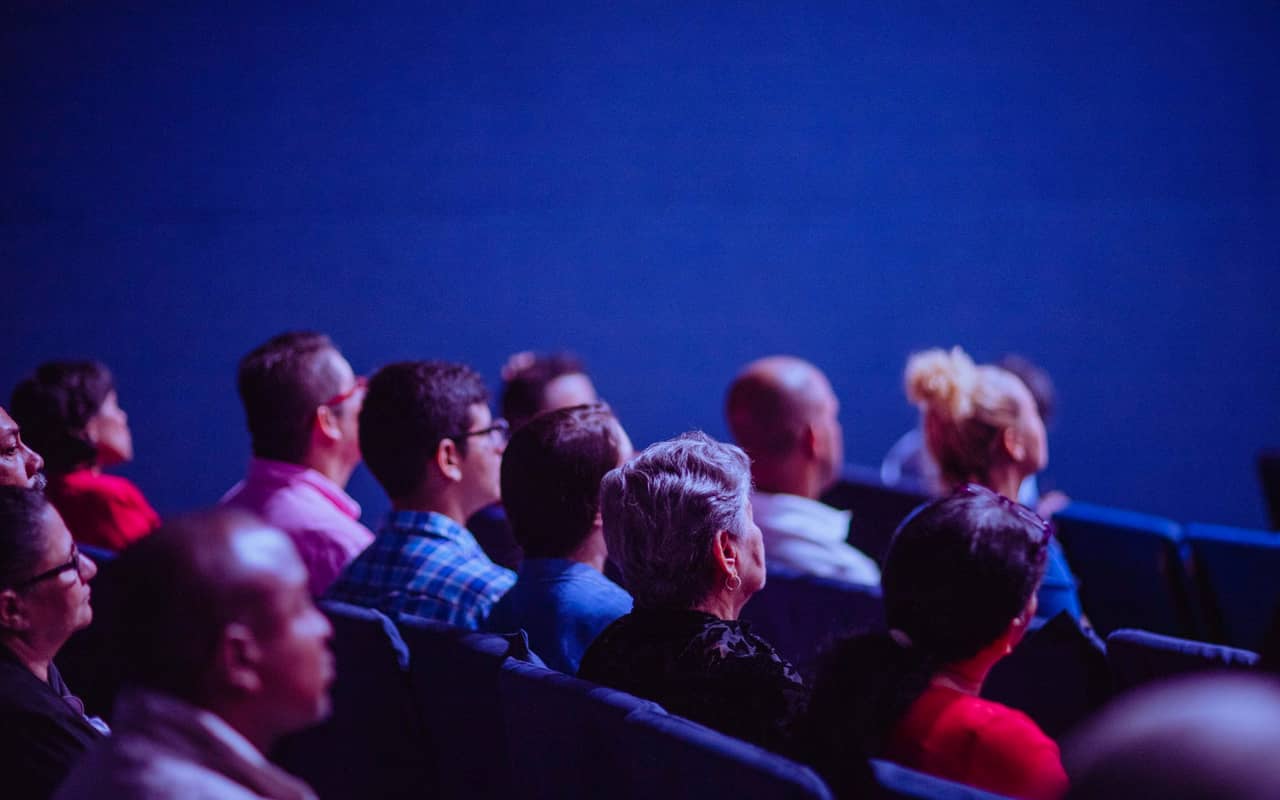
How To Use The Journey Technique
There are a number of ways to use the technique, but they all boil down to a few fundamentals.
Let’s dive into some of these fundamentals. That way you can avoid running into issues and use it in an optimal way without any headaches.
After all, it’s a better memory you want, not the hassle of something difficult to learn and use.
One: Develop The Journey Before You Start Using It
One problem people face when taking up this mnemonic device is a lack of preparation.
That’s a shame, because it’s really easy to draw your journey, literally mapping it out. I suggest using pen and paper to keep it simple and fun.
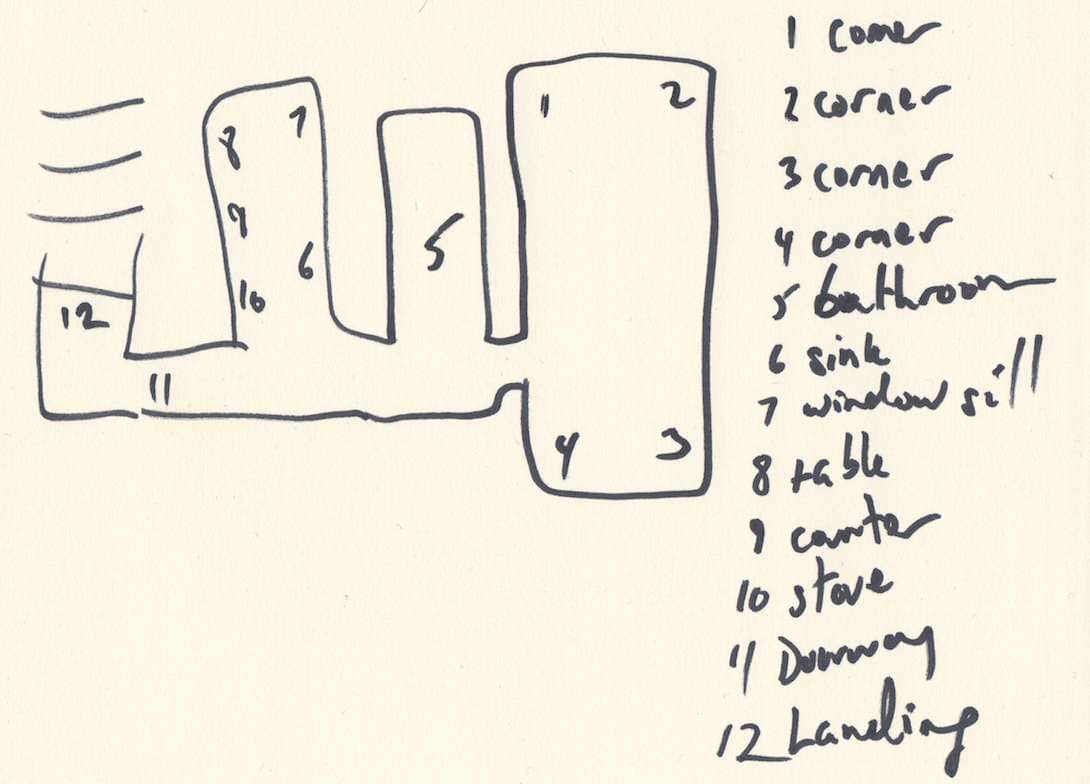
For one thing, keeping the journey simple reduces the cognitive load of using this technique. It also helps you avoid:
- Running into a dead end
- Crossing your own path
- Needing to memorize the journey itself, which shouldn’t be necessary with proper planning
It also helps you develop the habit and serves as a “haptic” exercise that makes the process physical. We know from recent scientific studies that these elements are incredibly important.
In this study, students who physically walked the journey, for example, recalled the names of butterflies with incredible ease. They scored just a bit better than those who used a mental Memory Palace without a physical component.
To see me draw a journey while I’m making the experience physical, here’s a video discussion about the tactical benefits of preparing your journeys in advance:
Two: Organize Your Information In Memorable Ways
Once you’ve got a few journeys mapped out, you can start thinking about how you will place information in them. You can arrange information:
- Alphabetically
- Numerically
- Thematically
- Historically
And that’s just for starters.
Alphabetical arrangements tend to work best for me.
For example, when learning a language , it’s easy to gather new words alphabetically. It enables another technique I teach in the Magnetic Memory Method Masterclass that involves using “Bridging Figures.”
Imagine you have several words to learn that start with the letter ‘A’ in Spanish:

I might choose an application like Adams National Historical Park to create my journey for these ‘A’ words. Here’s an example of how to assign different “memory spaces” or loci along a journey:

On the first station, I would place an association for “agradable.” The next station would receive an association for “alegre” and so on.
What should your associations be like?
You’ll probably benefit most from also thinking alphabetically.
Personally, I would follow someone like Abraham Lincoln along the journey. He would be a teacher assigning a nice person a grade on station one, selling his leg on station two, etc.
Coming up with lots of associations is a skill of its own. You’ll want to learn some of the variations on the pegword method to rapidly accelerate your abilities in this area. These visualization exercises will be useful too.
Three: Use Patterns To Form Long Term Memories
As fun as journey training can be, it’s not just about laying down mental imagery . You also need to revisit the journeys in a strategy manner.
This is because some amount of repetition is always needed for learning. Some people balk at this requirement, but here’s a question for you:
If you don’t want to repeat it, why bother learning it?
To repeat the journey in the most effective ways, you’ll want to follow some patterns based on memory science. These will harness what are known as:
- Primacy Effect
- Recency Effect
- Serial-Position Effect
All of these patterns are covered in detail in my free course. You’ll find them in lesson four. Interested?

Can You Reuse Journeys?
Many people ask this question.
The answer is “yes,” but most people don’t. If they do, they let the information they’ve placed along their journeys fade first.
There are a few nuances to consider before giving this technique a try. One of the issues you might encounter is called The Ugly Sister Effect .
Personally, I rarely reuse mine – except in the context of language learning. See the language learning section for more on how that works.
Applications For The Journey Method
A lot of people mistakenly believe that journey systems are useful for memorizing lists only.
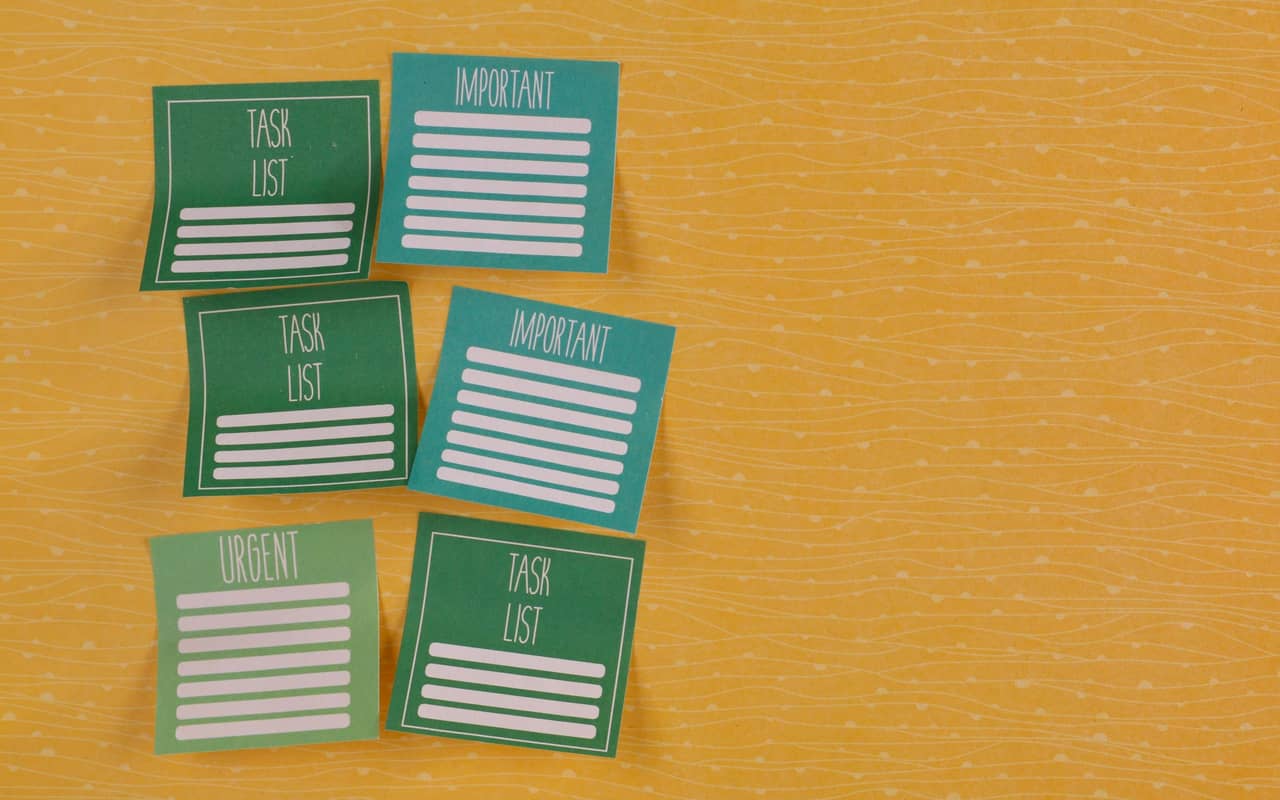
That’s simply not true.
Or better said, everything I’ve ever wanted to memorize could be organized into a list. But that doesn’t mean I had to recall the information in any particular order.
Language Learning
For example, in language learning, the whole point is to simply understand and be able to use words and phrases. The fact that they were instilled into long term memory in the form of lists poses no problem at all.
I suggest that you develop 26 journeys, one per letter of the alphabet. Then fill each journey with 10 words per letter. This will give you 260 words.
Next, add a phrase to each word. Since you’ve established the journey, this is a fun and easy way to reuse it. You’ll also wind up adding many more words than 260 as each phrase will contain words you don’t already know.
Technically, a speech is just a list of words delivered in a row. That’s certainly how I treated this TEDx Talk:
Here’s an artist’s rendition of the journey I assigned and then used to memorize this talk based on a familiar location in Kelvin Grove, Australia:
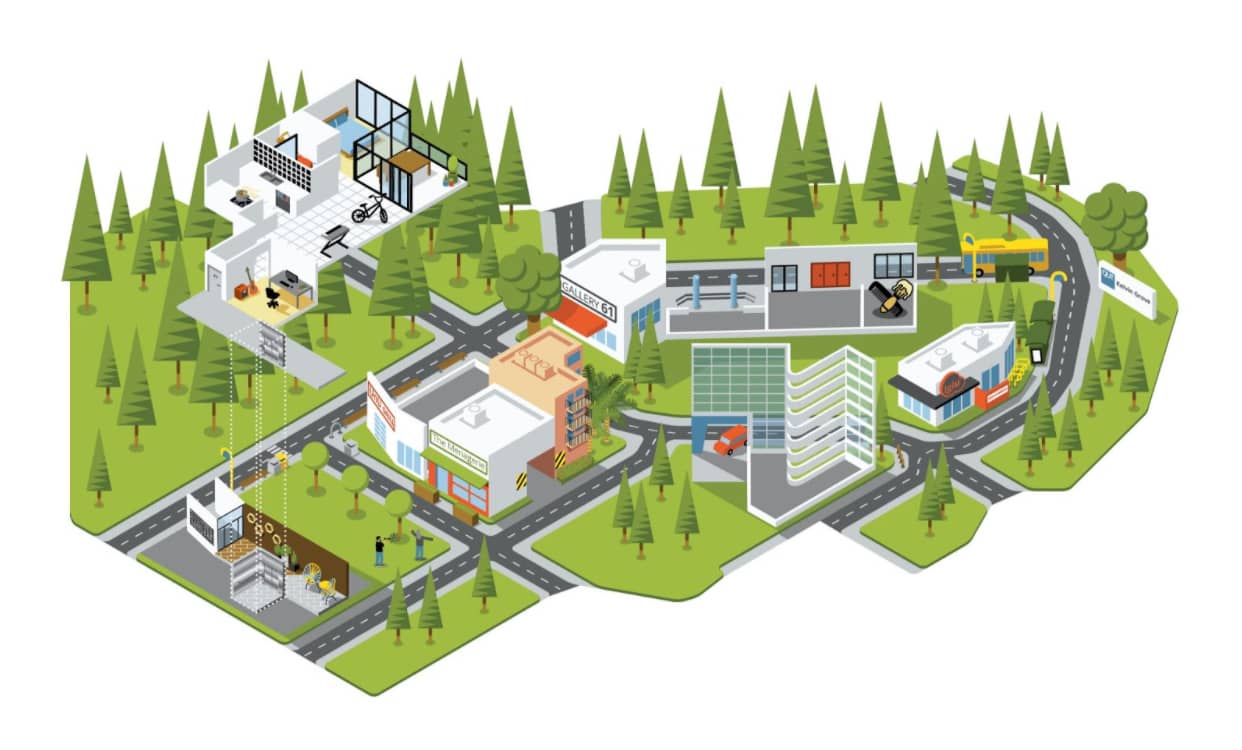
There are a few more tricks you’ll want to know about, so if you’re interested in this application of the journey method, here’s how to memorize any speech .
Basically, I memorized up to 17 words of this speech at a time on a single station. Once set in place, it was just a matter of combining the journey method with a small amount of spaced repetition .
It clearly worked well because this memorized presentation has gone on to garner millions of views.
Playing Cards
A very cool way to practice memory techniques is to memorize a deck of cards .
If you develop your skills, you can learn to encode several cards per “memory space.” My friend Dave Farrow told me he can encode up to six cards per station.
His approach is quite unique. Others use a system based on the Major Method .
This is one of my favorite applications of this technique.
When I present at live events, I use the room itself as a journey and simply memorize each name as it is presented to me.
People are astonished when I call out each name in the room.
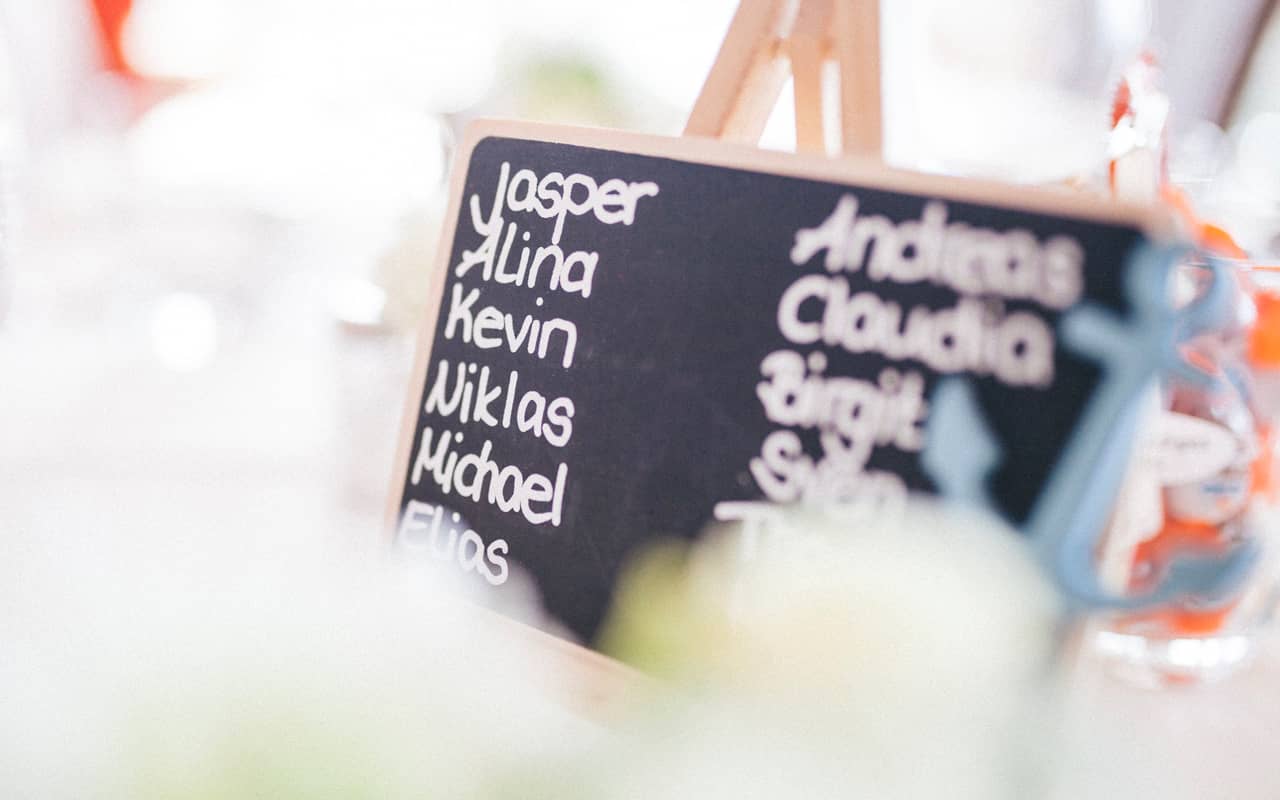
Are You Ready To Start Journeying?
I’ve given many talks and demonstrations. On top of learning a lot about languages and passing my PhD exams with flying colors, using this technique has been a lot of fun.
The only sad part is how people witness my use of these skills only to say that they could never learn to use such a skill.
That’s simply not true.
Anyone can learn to use the Journey Method.
The only question is:
Do you want to benefit from this secret weapon?
If so, I’m happy to help make that happen. If you have any questions, post them below or get in touch.
In all things, enjoy your journey with this incredible memory technique!
Related Posts
Looking for an extensive Magnetic Memory Method review? Listen to Jesse Villalobos show you how…
Memory improvement gurus promise you can use their "memory systems." Here are 8 reason why…
2 Responses
Hi Anthony! With warm regards, my name is Mark Rudy. Reading about this blog of yours called “The Journey Method: Your New Secret Weapon for Remembering” is truly fascinating! I can see (visualize) clearly how powerful it is. But I have a question, I simply don’t understand on how to apply it.
Here’s how it goes: If we are about to likened this on the memory palace method, can we treat each step that we’ve made on the journey as “stations”? Or that’s basically the idea behind listing and planning first the journey?
Your reply will be greatly much appreciated! Thanks in advance.
Cantomayor, Mark Rudy, D. February 4, 2023
Thanks, Mark.
Yes, any stop can be called loci or a station. I prefer stations or Magnetic Stations in my practice, but the terms aren’t nearly as important as diving in and using the skills.
In my mind, the journey method differs from the Memory Palace simply in that it is the outdoor version of the indoor technique. In my experience with it, there certainly are some nuances to account for.
For example, in the beginning, I used to not do well with bridges when journeying over them and using them to place images in space.
But that has since resolved with a fair amount of practice doing it.
Leave a Reply Cancel reply
Your email address will not be published. Required fields are marked *
Save my name, email, and website in this browser for the next time I comment.
I accept the Privacy Policy
WANT TO LEARN SIMPLE EVERYDAY THINGS WITHOUT FORGETTING?
Enter your email below to get instant access to my FREE course that gives you a proven step-by-step process for remembering anything you want . You'll discover how to:
- Speak any language fluently
- Recall complicated formulas, math equations, or numbers.
- Master the technical terms for your field of work or study.
- Recite poetry, jokes, and even long speeches word-for-word
- Quickly absorb the most important ideas from books, textbooks, or lectures...
Unlock your natural ability to learn and remember anything 3x faster now!
ABOUT ANTHONY METIVIER

Anthony Metivier is the founder of the Magnetic Memory Method, a systematic, 21st century approach to memorizing foreign language vocabulary, names, music, poetry and more in ways that are easy, elegant, effective and fun.
Dr. Metivier holds a Ph.D. in Humanities from York University and has been featured in Forbes, Viva Magazine, Fluent in 3 Months, Daily Stoic, Learning How to Learn and he has delivered one of the most popular TEDx Talks on memory improvement.
His most popular books include, The Victorious Mind and… Read More
Anthony Metivier taught as a professor at:
POPULAR POSTS
Recent posts, 7 meaningful ways to improve cognitive function, memory & focus, how to build virtual memory palaces & use them for learning, maximum learning in minimum time with exam study expert william wadsworth, why can’t i remember what i read 4 ugly truths & 6 fast fixes, how to remember things: 19 proven memory techniques, pay with confidence.

P.O. Box 933 Mooloolaba, QLD 4557 Australia
MEMORY COURSES
Quick links, memory boosting tips & tutorials.
Copyright © 2012 – 2024 Anthony Metivier · Advanced Education Methodologies Pty Ltd
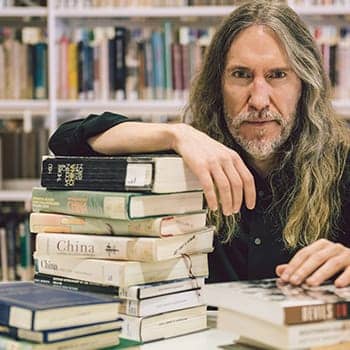
This Is the Secret to Remembering EVERYTHING Better
Enter your email below to get instant access to my exclusive course that will show you how to use memory palaces to MASSIVELY improve your memory so you can learn new skills, retain information, and stay sharp .

How it works
For Business
Join Mind Tools
Article • 5 min read
The Link and Story Methods
Remembering a simple list.
By the Mind Tools Content Team
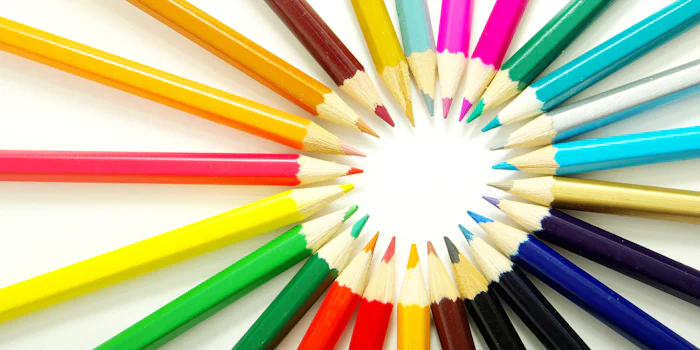
It's useful to be able to learn a list. Maybe you have some important tasks to complete, facts to recall for an exam, or key points to include in a speech. If you can make a list, and remember it, you'll be more organized, confident and effective.
And the good news is that there are some tried-and-true ways to boost your chances of success.
This article explains two such techniques: the Link Method and the Story Method. Both of these centuries-old strategies will help you to learn lists quickly and easily – using the power of imagination to maximize your memory.
What Are the Link and Story Methods?
The Link Method is one of the easiest "mnemonics," or memory tools, to learn. You choose interesting images to represent items on a list, then link those images together in memorable ways. Each link jogs your memory about what comes next.
Start with the first thing on your list. Choose an image for it, then link it to the next item – perhaps by imagining the two things smashing together, or by visualizing one on top of the other. Then move on through the list, linking each item with the next.
The Story Method takes this a step further – by using a story to connect all the items on the list. The flow of the story and the strength of the images help you to recall the original information.
Invent a story that features each item on your list, in the right order. Make your story funny, strange and exciting, and you'll find that it's even easier to remember.
Using the Link and Story Methods
Both of these methods rely on images. Sometimes the original information will suggest very clear images – a list of items to buy at the grocery store, for example. At other times, particularly when you're learning more abstract concepts, you’ll need to design your own "image clues" to trigger the memories.
If a word on your list doesn't trigger images, use a word that looks or sounds similar to it. That should still jog your memory about the original word.
For example, let's say you wanted to learn the list of the seven largest countries in the world: Russia, Canada, U.S., China, Brazil, Australia, India. You could do this with either the Link Method or the Story Method, as follows:
- Link Method – Choose a memorable image for each country, then link the first to the second, the second to the third, and so on.
Perhaps you imagine opening a set of Russian dolls (Russia) to find a Canada goose (Canada) inside! The goose lands on the lawn of the White House (U.S.). The door of the White House opens to reveal beautiful china plates and bowls laid out for a banquet (China). On each plate you can see a pile of Brazil nuts (Brazil). You collect up the nuts and use them to build a model of the Sydney Opera House (Australia). Finally, on the curved roof of the Opera House, you balance a tray of spicy Indian food (India).
- Story Method – Construct the images into a story, giving you more opportunities to add emotional triggers, and helping to make the information "flow."
Maybe a large Russian bear (Russia) is eating maple syrup (Canada) at the top of the Empire State Building (U.S.). But suddenly he drops the china bowl he's using (China). It lands on a member of the Brazilian soccer team (Brazil) playing a match in the street below. The player retaliates by hurling a boomerang (Australia) at the bear – who decides to run off and hide… in the famous Taj Mahal palace (India).
Mnemonics like these are even more effective when you choose your own images and links. Try to visualize and organize the information in ways that are particularly meaningful and memorable to you.
When you need to learn larger or more complex sets of information, consider using a mnemonic method called the Journey Technique .
Link and Story Methods Infographic
See the Link and Story Methods represented in our infographic .
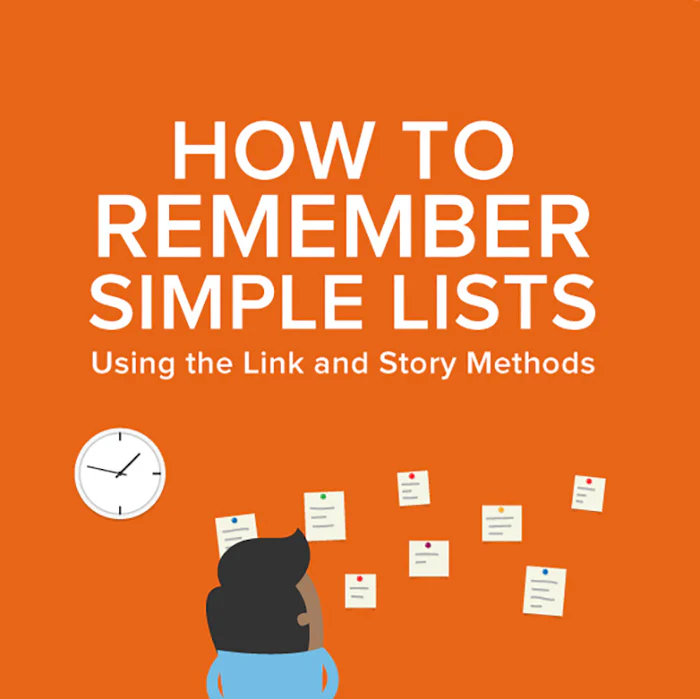
The Link Method is an age-old memory technique for remembering lists. It works by turning information into vivid images, then linking those images together in memorable ways. The Story Method is similar. It also relies on images, but this time the images are connected together as an engaging and memorable story.
You've accessed 1 of your 2 free resources.
Get unlimited access
Discover more content
The roman room system.
Remembering Grouped Information
Memory Games
Having Fun While You Improve Your Memory
Add comment
Comments (0)
Be the first to comment!

Try Mind Tools for FREE
Get unlimited access to all our career-boosting content and member benefits with our 7-day free trial.
Sign-up to our newsletter
Subscribing to the Mind Tools newsletter will keep you up-to-date with our latest updates and newest resources.
Subscribe now
Business Skills
Personal Development
Leadership and Management
Member Extras
Most Popular
Latest Updates

Pain Points Podcast - Improve Your Empathy

Pain Points Podcast - Modeling Inclusion
Mind Tools Store
About Mind Tools Content
Discover something new today
Cognitive bias.
How to Make Objective Decisions
Pain Points Podcast - Pressure
Coping With Pressure
Recommended for you
Giving praise.
Recognizing Good Work
Business Operations and Process Management
Strategy Tools
Customer Service
Business Ethics and Values
Handling Information and Data
Project Management
Knowledge Management
Self-Development and Goal Setting
Time Management
Presentation Skills
Learning Skills
Career Skills
Communication Skills
Negotiation, Persuasion and Influence
Working With Others
Difficult Conversations
Creativity Tools
Self-Management
Work-Life Balance
Stress Management and Wellbeing
Coaching and Mentoring
Change Management
Team Management
Managing Conflict
Delegation and Empowerment
Performance Management
Leadership Skills
Developing Your Team
Talent Management
Problem Solving
Decision Making
Member Podcast
The Journey Method
The journey method – basics.

You know your own house intimately. Mentally place things in various locations and you will be able to find them easily.
You no doubt have places that could easily be used for further ‘journeys’. Maybe you go to a gym or a sports centre. Think of all the ‘stages’ (or ‘loci’) that you could specify in either. Is there a big railway station near where you live? If you’re already familiar with it, you could use that. If not, visit it and take a notebook, or even a digital camera, and spy out some locations.
With this approach, you can easily build up a database of half a dozen or more memory journeys, and you will have them ready for use whenever you need to remember things.
If you’ve used your house as a memory journey, you might be ready to extend it to make a more demanding but much more useful memory journey. It’s not difficult, but it gives you a lot more scope to memorise longer lists, and using it automatically improves your concentration skills.
Specific journeys for specific jobs

If you live near a museum, you have access to an amazing site for a memory journey.
Do you have a museum or art gallery in your area? Places like these, and extravagantly designed public buildings are ideal locations for memory journeys.
Studying geography? Create a memory journey based round a travel agency, or a landing stage, or an airport. Use your imagination, be inventive. This type of thing is what your mind craves – to be used, and stretched, and expanded. You can create a memory journey based on anything or any place, and it can be just about as effective as you want it to be.
Repetition and reinforcement
To change these into long-term memories, you have to revisit them – this is a great memory improvement method, but it’s not magic! Take a minute or two each time to stroll along the journey, viewing all the items in their respective places, and using all your senses to really experience them.
Don’t gallop through the journey as though speed is the most important thing – it’s not. Take a leisurely stroll, at walking pace, noting with interest each and every item. Take a good look at them, touch them, walk round them. Use all your senses. If it’s something that can be smelled, really imagine that smell, breathe it in deeply and savour it. If it’s something with a particular ‘feel’, then really check it out. Feel the sensation of touching the item and maybe moving it slightly. Feel its weight and solidity. Interact with it. This will all go to make it a real memory.
Once you’ve set up a long-term journey, revisit it once or twice the same day, again the next day, and the next. Make a mental note to call back a week later, then a week after that, and a month after that. By that time you will have successfully reinforced those memories, and only an occasional stroll along that particular journey will be necessary. Memories that are created in this way can become permanent, without a whole lot of effort.
The history of the Journey Method
The Journey Method has been used for centuries, and probably a lot longer than that. It is also referred to as the Roman Room method, since its use was first recorded by Romans who used it by visualising items in their own houses. They would mentally place items in certain rooms, or at specific locations in rooms, and so the Roman Room method was born. It is just the same today, only you don’t have to be a Roman to use it, just someone who wants a better than average memory. And you don’t have to live in a Roman villa – your own house will do just fine!
Roman orators, famous for being able to hold audiences spellbound with their magnificent oratory, are believed to have used this same method. Certain key points of their speeches would be ‘placed’ at specific points along a journey, perhaps through the various rooms of their houses, perhaps further afield. As they spoke, they would occasionally move further along the route, spotting items that would trigger relevant memories, and they would confidently and smoothly deliver their speeches.
Incidentally, this is presumably where the phrase “in the first place …” comes from.
Make a speech like a professional
The very fact that this method has such a long and successful history indicates that it outshines almost all others. If you learn nothing else to improve your memory, learn the Journey Method. It’s easy, it’s effective, and when you use it, it’s impressive. A person who uses the Journey Method can deliver a speech without notes, just mentally glancing at landmarks or key locations on his mental journey and being immediately reminded of key points that he has to address in his speech.
And because he is working from key points, and elaborating on them ‘from the hip’, the speech is effectively delivered as though the speaker is just ‘making it up’ as he goes along. His speech is that much more impressive, therefore, and he will naturally be more relaxed, with the assurance that comes from knowing your subject intimately.
Learn how to memorise playing cards
The Journey Method is one way you can memorise playing cards (there are others). First, though, you have to use a system that makes them more manageable. Trying to memorise them without some sort of system is almost doomed to failure.
Once you’ve given them some individual character of their own, you can use the Journey Method to place them at various locations. They’ll still be there next time you look for them!
<< Memory Techniques
>> Mini Memory Journeys
Would you like to submit a page for RMI? It's easy, just fill in the details below.
Insert/edit link.
Enter the destination URL
Or link to existing content

The Universe Of Memory
Redefine your world with better memory
Mnemonics Course (Part 6) – The Journey Method
I’m really excited to share this strategy with you! It’s really great for expanding your short-term memory!
You can use it to memorize (among others):
- presentations
- shopping lists
- deck of cards
- people’s names at parties
- telephone numbers
I’ve even heard about some guy who used it to memorize a hefty dictionary (about 30k entries). L et’s shed some light on it then, shall we?
The Journey Method
The basic principle of the journey method is to imagine a journey and place items you want to remember along the way. Choose a route which you are very familiar with and which has a certain number of distinctive objects.
I want to stress this part – the objects (or places) should be really distinctive. Otherwise, you won’t remember your associations.
Then imagine the things you want to remember at each of those locations, associating one item at each location. Use the rules for creating images (part 2 of the course) so that the images are easy to remember.
Choose 20-30 distinctive places for starters and as you mentally travel along the route, recall the information you’ve stored there. Another piece of advice is not to make the route too long as it may become too difficult to remember all the distinctive objects along the way.
If you want to memorize, say, over 100 words, you can use 2-3 routes. It’s usually a better choice than 1 really long route.
The journey method is also called the method of loci . I tend to differentiate these two as the method of loc i (for me) takes place inside, whereas the journey method happens outside.
It’s actually a great idea to mix these two. You can start a journey at your flat and then take it outside.
It’s like a mental stroll. But one of the greatest things about this method is that you can review all the pieces of information which you stored whenever you want. In the line, at the post office, etc.
It definitely helps to make better use of our time.
Task For You
Here is a list of 31 objects. Memorize them using the journey method .
Nightingale, television, scissors, love, action, printer, notebook, helmet, worker, tie, attraction, event, management, emotion, fuel, binder, cucumber, minister, moving, contract, row, resentment, practice, autumn, brawl, toast, coach, crumbs, scar, ant, tank.
As always have fun and talk to you tomorrow in the last part of the course!
Bartosz Czekala
17 comments
A good way to help making the journey more clear is to draw a plant/map of a view from above with simple lines (called “croqui” – in Portuguese) , and with numbers for each room/space/area.
And with the map drawn is pretty quick to refresh those memories by an instant glance at it.
I used a map of Severin Manor (my character’s house in Raven Rock – from the game Skyrim) to memorize Japanese words and now I can’t forget them, everytime I visit the place in game or think about it the words pop in my face like an ad LOL.
I have to memorize 1000s of words. Where do I find so many locations for each meaning of a word?
Well, that’s a tough part. You use all the locations that come to your mind – home, your parent’s home, different locations around your city, etc. You can even use artificial locations like the ones from TV series. But yeah, it’s getting complicated with too many words.
Would this be useful for memorizing vocabulary that i wont have to remember in order, to practice a group of words at once?
Yes, definitely 🙂
Is there any reason why mnemonic is not taught in schools as subject?
If there is some, I am not aware of it. It’s really ridiculous, right?
Hey there! Hope you are enjoying your summer time, many thanks for the pragmatic mnemonic tricks, those are interesting, however, I need to memorize some technical words(terminologies), I am wondering if you can help me with remembering them readily in terms of the specific mnemonic? Best, Mary
I do, thank you and you’re welcome! 🙂 I’ve sent you an e-mail regarding your question! 🙂
I found Method 5 quite thorough. I was able to recall the meaning of 10 out 10 abstract words when I saw them in the foreign language I am studying. Also, I was able to recall nine out ten of these words in the foreign language when seeing the English for these words.
This actually seems like a good way to study for tests and quizzes. This way you can use otherwise wasted transit time. I like it.
True. I have used this method more times than I can remember to learn for exams! 🙂
Will this method work for learning Chinese words?
As far as I am concerned – yes. I have never learnt Chinese but I know there are a lot of people who use this method to learn it.
Good idea! I will try! Iwant to ask: if a journey outside is short, which object should it be there – tree, lake or building…, but they are not so special…
Theoretically, all the objects in the Journey Method should be very specific. Although, if a journey is short, you can try to pay more attention to ordinary objects thus making them specific!
Leave a Reply Cancel reply
Your email address will not be published. Required fields are marked *
Session expired
Please log in again. The login page will open in a new tab. After logging in you can close it and return to this page.
Insert/edit link
Enter the destination URL
Or link to existing content
- Subscribe to BBC Science Focus Magazine
- Previous Issues
- Future tech
- Everyday science
- Planet Earth
- Newsletters
Where do memories form and how do we know?
Memory is an important part of what makes us human but what is it, and where are new memories formed?
Helen Thomson
Without memories, we’d be lost. They’re the threads that hold our lives together, connecting who we were to who we are.
But we’ve only recently pieced together the extraordinary brain science behind them – a story that takes in amnesiacs, mind palaces and ghostly carnivals.
One of our first analogies for understanding memory comes from Ancient Greece, where Plato likened memories to etchings on a wax tablet, and his favourite student, Aristotle, continued to use this in his own writings.
Forgetfulness, said Aristotle, occurred in childhood because the wax was too soft, and in the elderly because it was too hard.
For him, memories were not located in the brain , but throughout the body. He thought that the brain was present merely to cool the hot heart – the seat of our soul.
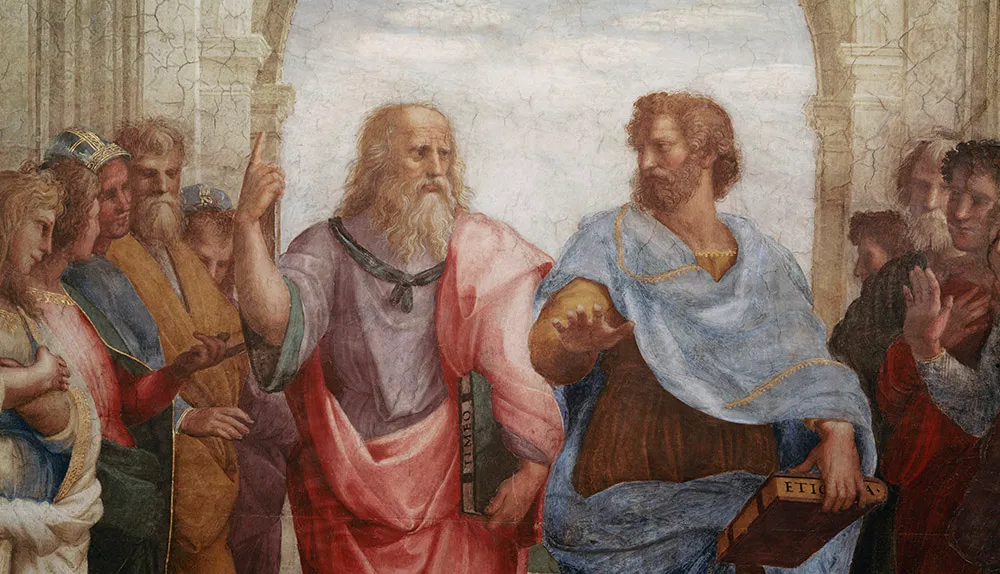
A tendency to favour the heart over the brain continued for centuries – in part because of the Church’s ban on dissecting the human brain. In fact, it wasn’t until the 17th Century that people began to realise that the brain had any capacity for thought at all.
It was German philosopher Hermann Ebbinghaus who pioneered the first scientific study of memory in the late 19th Century. He cared less for where memories lay in the brain, and more for how memory works.
In his most famous experiments, Ebbinghaus created a list of more than 2,000 nonsense words, such as ‘kaf’ or ‘nid’, which he proceeded to memorise and then tried to recall over time. He discovered that we tend to forget in an exponential way – that is, we forget a lot soon after learning, and then we forget in a slower manner over time.
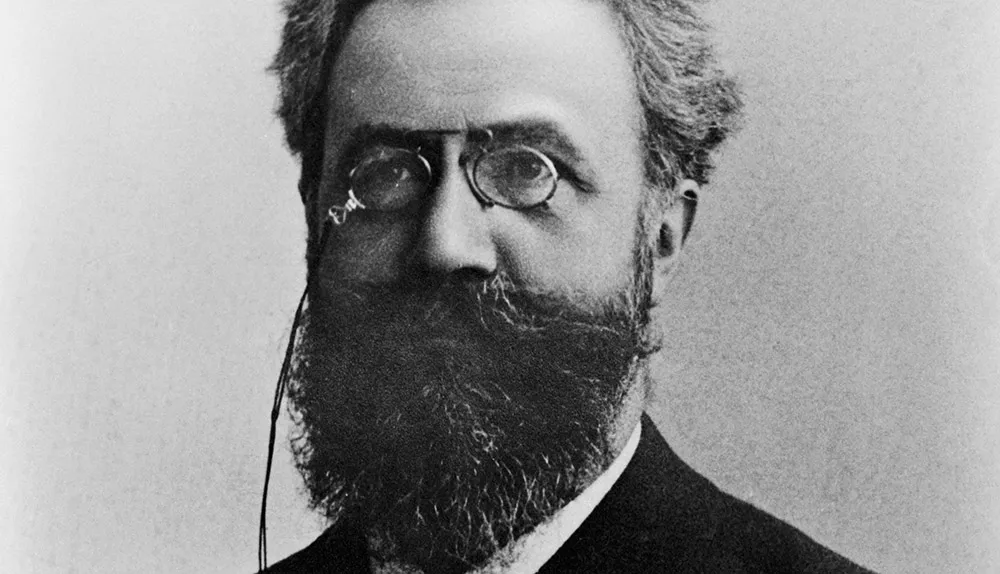
He also classified three types of memory in psychology: sensory memory, short-term memory and long-term memory – labels that are still used today.
Sensory memory is the first kind of memory that enters your brain: it lasts for a split second. The touch of your clothes against your skin, the smell of a bonfire. Unless we attend to that memory, it disappears for good. Give it some thought, however, and you will nudge it into your short-term memory.
You use this all the time without realising. For instance, you can only understand what happens at the end of this sentence because you remember what happened at the beginning.
Our short-term memory is said to have a capacity for about seven items, which can be held in the mind for around 15 to 30 seconds. Rehearsing these items would be a way to transfer them into your long-term memory – our seemingly limitless warehouse for storing memories for the long haul.
Theories of the mind
Over the following decades, others continued to advance our understanding of memory. One of the most influential was a British psychologist called Frederic Bartlett.
In 1914, he performed a series of experiments in which he asked students to read a story and repeat it back from memory.
By analysing how the story transformed over days, months and years, he advanced the (now proven) theory that memories are imperfect reconstructions of events. He said we actually only remember a small part of the original observation, and fill in the gaps with cultural references and personal knowledge.

But despite a growing recognition of how human memory worked, many questions remained. Where are memories stored? What does a memory look like? Those were questions that the American psychologist Karl Lashley spent his whole career trying to answer.
His most important experiments involved searching for traces of memory within specific areas of the rat’s cerebral cortex – the folded, outer layer of the brain that plays a role in cognition, sensory perception, decision making, and a whole host of other key functions.
From 1935 onwards, he systematically damaged specific areas of the cortex before or after a rat was trained to find its way out of a maze. But no matter which part of the brain was removed, the rats continued to remember how to exit the maze better than rats who had never been trained in the first place.

Lashley concluded that our ability to learn and remember must be distributed across many parts of the brain instead of lying within a single region.
One particular patient proved key to this idea: a young man called Henry Molaison.
Having suffered severe epileptic seizures for most of his life, Molaison agreed to a drastic experimental treatment. In 1953, surgeons drilled holes into his brain and sucked out the areas responsible for the seizures – a seahorse-shaped region on either side of the brain called the hippocampus

The operation was a success in that it largely cured his seizures, but Molaison was left with profound amnesia, unable to create new long-term memories.
However, Molaison could remember most of his past up until a few years before the operation. It was later discovered that he could also form procedural memories, a type of long-term memory responsible for knowing how to do something, like riding a bike.
Molaison’s memory troubles proved that the hippocampus was vital in creating most new memories, but that the memories themselves were stored elsewhere in the brain.
Hippocampus - An area of the brain that is vital to forming different kinds of memories. Famously resembles a seahorse.
Neuron - A cell that is uniquely suited to passing messages around the brain in the form of electrical activity. Our brains contain some 86 billion of them.
Neurotransmitter - A chemical messenger that is released at the end of a neuron by the arrival of an electrical impulse. Neurotransmitters diffuse across the gap and make nearby neurons more or less likely to fire their own electrical impulse.
Semantic memory - A type of long-term memory of ideas and facts that is not drawn from personal experience, such as the name of a colour.
Synapse - The gap between two neurons, which allows activity to flow from one cell to the next. Changes in these structures are integral to memory and learning.
Researchers, including neuroscientist Prof Suzanne Corkin , continued to test Molaison regularly over the next 46 years – although for Molaison, each day they spoke was like the first. “It’s a funny thing,” Molaison told Corkin. “You just live and learn. I’m living and you’re learning.”
Although Molaison was instrumental in convincing the research community that memory was not the responsibility of one sole region of the brain, it did not answer the question of how a memory is formed.
Neurons that fire together, wire together
Back in 1906, Camillo Golgi and Santiago Ramón y Cajal had been jointly awarded a Nobel Prize for advances in cell-staining techniques that demonstrated the anatomy of a neuron.
Thanks to their work, scientists knew there were millions of neurons in the brain that pass messages to each other in the form of electrical impulses. When an impulse reaches the end of one neuron, it causes the release of chemical messengers called neurotransmitters, which pass across the gap, or synapse, and latch onto a neighbouring neuron.
This makes the second neuron more or less likely to fire its own impulse. But how these neurons formed long-term memories was still a mystery
Read more about the brain and memory:
- Key experiment
That remained the case until 1949, when Donald Hebb published one of the most influential theories of neuroscience in the last century. He wrote that any two brain cells that are repeatedly active at the same time will tend to become ‘associated’.
Their anatomy and physiology will change so that they form new connections or strengthen existing ones. The activity in one, he said, will subsequently facilitate activity in the other. You’ll often find this summarised as “neurons that fire together, wire together."
Simply put, if two concepts, say the smell of a rose and its name, repeatedly stimulate their respecting neurons in the brain at the same time, those neurons will change shape and strengthen that connection.
Neurons associated with the smell of a rose will now more likely stimulate neurons responsible for its name
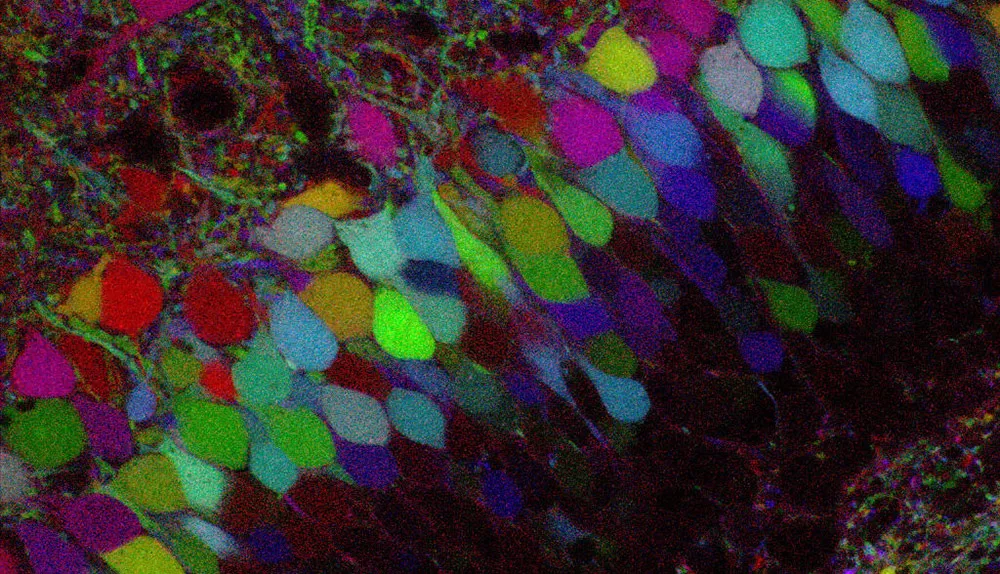
This, said Hebb, is the process that underlies the storage of long-term memories. Such memories endure because they are now a unique part of your neuronal architecture. The more they are recalled, the stronger and more permanent the memory becomes.
Around the same time, Canadian surgeon Wilder Penfield demonstrated how stimulating parts of the cortex could evoke a memory.
He was operating on people with epilepsy who were awake during the surgery. While operating on one woman, he stimulated an area overlaying the hippocampus, within the cortex.
His patient spoke: “I think I hear a mother calling her little boy somewhere, it seems to be something that happened years ago in the neighbourhood where I live.”
Penfield stimulated the spot again, and once more the mother’s voice cried out. He moved the stimulus a little to the left, and suddenly the woman heard more voices. It was late at night, she said, and they were coming from a carnival.
“There are lots of big wagons that they’re using to haul in the animals”.
The tiny jolts of activity applied by Penfield seemed to be bringing to life long-forgotten memories – like reaching into a dusty album and picking a photo at random.
- Instant Genius: the Brain
- Memory could depend on the time of the day, study in mice suggests
- Childhood hardship linked to memory decline later in life
- How do psychedelics affect the brain?
Recalling memories is a mysterious process that is still not fully understood. However, thanks to Prof Elizabeth Loftus , then at the University of Washington, we know that our recall is not always accurate.
In the 1990s, she demonstrated that false memories could be implanted in people’s minds. She convinced people of fake chokings, near drownings, even demonic possessions. She showed that tiredness, drugs and low IQ could all influence how likely someone is to be at risk of forming false memories .
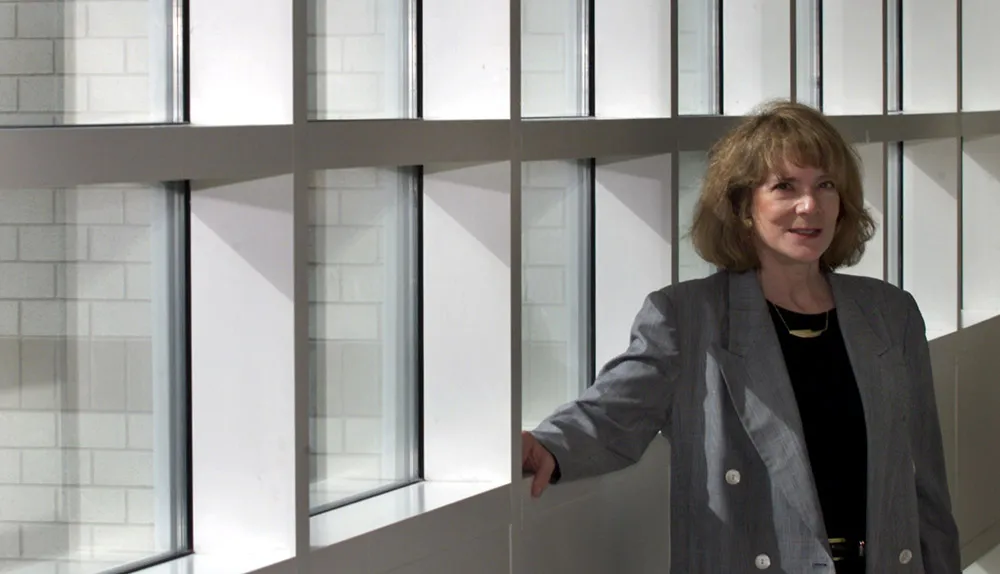
Her work revealed something quite extraordinary: that our memories, once formed, are not fixed. Each time we retrieve a memory, we strengthen the neural pathways that have created it, and in doing so, reinforce and consolidate that memory so that it becomes lodged more permanently in our minds.
But for a short time during this retrieval process, our memory becomes malleable – we are able to reshape it and, sometimes, contaminate it.
The hippocampus: where memories are formed
With advancing imaging techniques, research has focused once again on pinpointing where in the brain memories are stored. We now know that the hippocampus springs into action to glue different aspects of a single memory together.
Indeed, when people attempt to learn new associations and recall them later, those whose hippocampus generated the most activity while learning the associations are best at recalling them in the future.
It’s as if they glued them together better in the first place.
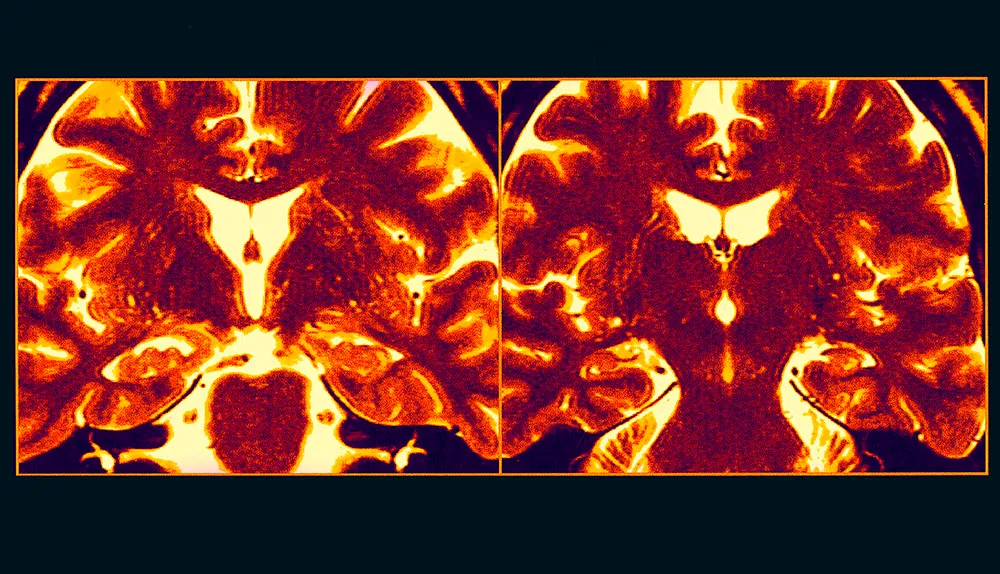
By putting all the pieces of the puzzle together, researchers thought they had a pretty good theory of memory: they surmised that all incoming information is briefly processed in the cortex, before converging on the hippocampus.
The hippocampus sorts through the new information, deciding how ‘important’ it is (in essence, does it look like something worth remembering?), and then, if necessary, encoding it in the brain by forming new synapses.
Over time, the neurons that represent this memory will migrate into the cortex for long-term storage, their connections being strengthened each time we access the memory.
However, advanced methods for recording and manipulating brain activity have recently turned that theory on its head.
In 2017, researchers at the Massachusetts Institute of Technology, led by Takashi Kitamura, showed that short- and long-term memories are actually formed simultaneously .
Kitamura’s team used new techniques that involved optogenetics, which is a way of turning cells on and off using light, together with labelling individual memory cells. The team trained mice to fear a particular chamber by giving them a small electric shock when they entered it.
Immediately after the training, the researchers were able to see memories of the shock forming in both the hippocampus and the prefrontal cortex, an area just behind the forehead.
However, the memory cells in the prefrontal cortex lay silent. A trace of the memory was definitely there, though – when the team stimulated these cells artificially, the mouse would freeze, just as it did when the hippocampal memory cells were active and when the mouse naturally encountered the chamber.
Rather than the memory gradually migrating from the hippocampus to the cortex, it appeared it was already there. Over two weeks, the cortex memory cells changed shape and activity and eventually became active by themselves when the mice encountered the chamber, at which point the hippocampal memory cells became silent.
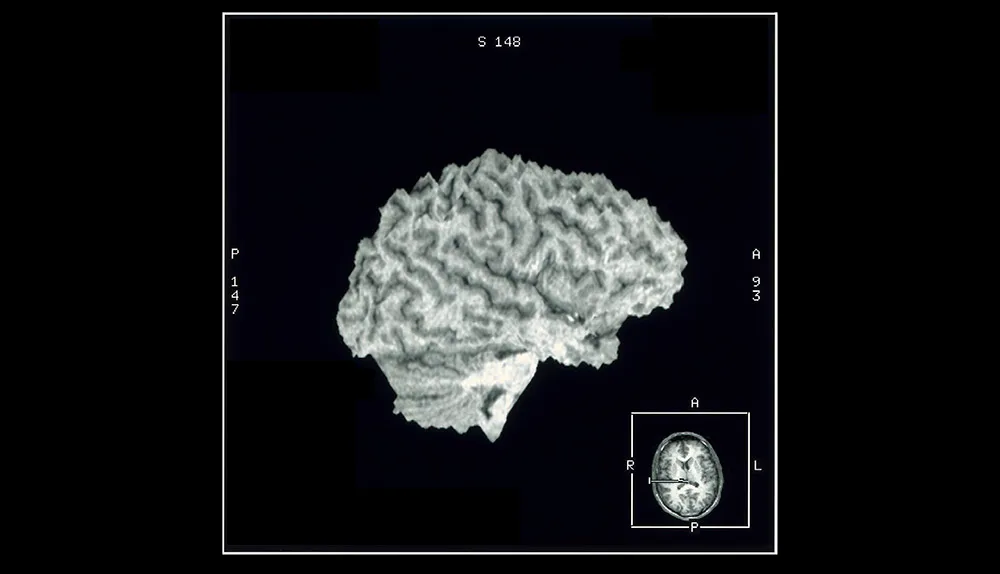
Such sophisticated methods for analysing the human brain will continue to help us understand healthy memory, as well as what happens when it is ravaged by disease.
Alzheimer’s remains the leading cause of dementia, affecting more than half a million people in the UK. The disease destroys the vital connections between neurons, leading to memory loss and confusion. Despite our best efforts, there is still no cure.
There are, however, ways in which you can improve your memory. Research by Prof Eleanor Maguire at University College London has shown that the brains of the world’s best memorisers aren’t any different to anyone else’s anatomically: the memory champs just make use of an ancient technique called the ‘method of loci’.
In order to remember a large number of items, place them around a ‘mind palace’. This can be any location that you know well. To recall the items, you just retrace your route and pick them up.
It’s a trick that makes anything easier to recall at a later date. Try it for yourself: it turns out that anyone can be a super memoriser.
- This article first appeared in issue 314 of BBC Focus magazine
Share this article

- Terms & Conditions
- Privacy policy
- Cookies policy
- Code of conduct
- Magazine subscriptions
- Manage preferences

- Writing, Research & Publishing Guides

Enjoy fast, free delivery, exclusive deals, and award-winning movies & TV shows with Prime Try Prime and start saving today with fast, free delivery
Amazon Prime includes:
Fast, FREE Delivery is available to Prime members. To join, select "Try Amazon Prime and start saving today with Fast, FREE Delivery" below the Add to Cart button.
- Cardmembers earn 5% Back at Amazon.com with a Prime Credit Card.
- Unlimited Free Two-Day Delivery
- Streaming of thousands of movies and TV shows with limited ads on Prime Video.
- A Kindle book to borrow for free each month - with no due dates
- Listen to over 2 million songs and hundreds of playlists
- Unlimited photo storage with anywhere access
Important: Your credit card will NOT be charged when you start your free trial or if you cancel during the trial period. If you're happy with Amazon Prime, do nothing. At the end of the free trial, your membership will automatically upgrade to a monthly membership.
Return this item for free
We offer easy, convenient returns with at least one free return option: no shipping charges. All returns must comply with our returns policy.
- Go to your orders and start the return
- Select your preferred free shipping option
- Drop off and leave!
Return instructions

Download the free Kindle app and start reading Kindle books instantly on your smartphone, tablet, or computer - no Kindle device required .
Read instantly on your browser with Kindle for Web.
Using your mobile phone camera - scan the code below and download the Kindle app.

Image Unavailable

- To view this video download Flash Player

Follow the author

The Bone Cave: A Journey through Myth and Memory Hardcover – December 5, 2023
Purchase options and add-ons.
- Print length 256 pages
- Language English
- Publisher Birlinn
- Publication date December 5, 2023
- Dimensions 5.25 x 1.25 x 8.5 inches
- ISBN-10 1780278357
- ISBN-13 978-1780278353
- See all details

Editorial Reviews
About the author, product details.
- Publisher : Birlinn (December 5, 2023)
- Language : English
- Hardcover : 256 pages
- ISBN-10 : 1780278357
- ISBN-13 : 978-1780278353
- Item Weight : 12.9 ounces
- Dimensions : 5.25 x 1.25 x 8.5 inches
- #33 in Caving & Spelunking
- #108 in Air Travel Reference (Books)
- #206 in Walking (Books)
About the author
Dougie strang.
Discover more of the author’s books, see similar authors, read author blogs and more
Customer reviews
Customer Reviews, including Product Star Ratings help customers to learn more about the product and decide whether it is the right product for them.
To calculate the overall star rating and percentage breakdown by star, we don’t use a simple average. Instead, our system considers things like how recent a review is and if the reviewer bought the item on Amazon. It also analyzed reviews to verify trustworthiness.
- Sort reviews by Top reviews Most recent Top reviews

Top reviews from the United States
Top reviews from other countries.
- Amazon Newsletter
- About Amazon
- Accessibility
- Sustainability
- Press Center
- Investor Relations
- Amazon Devices
- Amazon Science
- Sell on Amazon
- Sell apps on Amazon
- Supply to Amazon
- Protect & Build Your Brand
- Become an Affiliate
- Become a Delivery Driver
- Start a Package Delivery Business
- Advertise Your Products
- Self-Publish with Us
- Become an Amazon Hub Partner
- › See More Ways to Make Money
- Amazon Visa
- Amazon Store Card
- Amazon Secured Card
- Amazon Business Card
- Shop with Points
- Credit Card Marketplace
- Reload Your Balance
- Amazon Currency Converter
- Your Account
- Your Orders
- Shipping Rates & Policies
- Amazon Prime
- Returns & Replacements
- Manage Your Content and Devices
- Recalls and Product Safety Alerts
- Conditions of Use
- Privacy Notice
- Consumer Health Data Privacy Disclosure
- Your Ads Privacy Choices
Remembering to learn: independent place and journey coding mechanisms contribute to memory transfer
Affiliation.
- 1 Fishberg Department of Neuroscience and Alfred B. and Gudrun J. Kastor Neurobiology of Aging Laboratories, Mount Sinai School of Medicine, New York, New York 10029-6574, USA.
- PMID: 22323731
- PMCID: PMC3567459
- DOI: 10.1523/JNEUROSCI.3998-11.2012
The neural mechanisms that integrate new episodes with established memories are unknown. When rats explore an environment, CA1 cells fire in place fields that indicate locations. In goal-directed spatial memory tasks, some place fields differentiate behavioral histories ("journey-dependent" place fields) while others do not ("journey-independent" place fields). To investigate how these signals inform learning and memory for new and familiar episodes, we recorded CA1 and CA3 activity in rats trained to perform a "standard" spatial memory task in a plus maze and in two new task variants. A "switch" task exchanged the start and goal locations in the same environment; an "altered environment" task contained unfamiliar local and distal cues. In the switch task, performance was mildly impaired, new firing maps were stable, but the proportion and stability of journey-dependent place fields declined. In the altered environment, overall performance was strongly impaired, new firing maps were unstable, and stable proportions of journey-dependent place fields were maintained. In both tasks, memory errors were accompanied by a decline in journey codes. The different dynamics of place and journey coding suggest that they reflect separate mechanisms and contribute to distinct memory computations. Stable place fields may represent familiar relationships among environmental features that are required for consistent memory performance. Journey-dependent activity may correspond with goal-directed behavioral sequences that reflect expectancies that generalize across environments. The complementary signals could help link current events with established memories, so that familiarity with either a behavioral strategy or an environment can inform goal-directed learning.
Publication types
- Comparative Study
- Research Support, N.I.H., Extramural
- Research Support, Non-U.S. Gov't
- Hippocampus / physiology*
- Learning / physiology
- Maze Learning / physiology*
- Memory / physiology*
- Rats, Long-Evans
- Transfer, Psychology / physiology*
Grants and funding
- R01 MH073689-06A1/MH/NIMH NIH HHS/United States
- R01 MH065658/MH/NIMH NIH HHS/United States
- R01 MH073689-05/MH/NIMH NIH HHS/United States
- MH073689/MH/NIMH NIH HHS/United States
- R01 MH065658-09/MH/NIMH NIH HHS/United States
- R01 MH073689/MH/NIMH NIH HHS/United States
- MH065658/MH/NIMH NIH HHS/United States
A Framework for Effective Guided Mnemonic Journeys
- Conference paper
- First Online: 26 June 2023
- Cite this conference paper

- David Iclanzan ORCID: orcid.org/0000-0003-2587-9106 13 &
- Zoltán Kátai ORCID: orcid.org/0000-0003-2343-3629 13
Part of the book series: Lecture Notes in Computer Science ((LNCS,volume 14077))
Included in the following conference series:
- International Conference on Computational Science
756 Accesses
The memory palace, also known as the memory journey, is a mnemonic technique where information to be remembered is encountered along a predetermined path through envisioned places, creating strong spatial and visual connections between the material and specific locations and vivid images. Constructing a memory palace for complex computer science concepts may prove challenging for students, as it requires the identification, selection, and organization of essential ideas from the material. This task is better suited to an expert on the curriculum, such as the instructor.
In this paper, a framework for designing and delivering Guided Mnemonic Journeys is proposed. Led by a teacher in person or via audio or video, the approach uses a virtual tour of the university campus at its core. The approach combines various mnemonic techniques to create a more comprehensive approach to memory enhancement. The instructor plans the story arc and places various mnemonic cues along the path and then guides the students through the narrative and imagery, providing context, clear structure, and instructions for each step.
A pilot study indicated that students perceived the delivered Guided Mnemonic Journeys positively, appreciating the rich didactic activity and the opportunity to learn new mnemonic techniques.
This study was partially supported by the Sapientia Foundation Institute for Scientific Research.
This is a preview of subscription content, log in via an institution to check access.
Access this chapter
- Available as PDF
- Read on any device
- Instant download
- Own it forever
- Available as EPUB and PDF
- Compact, lightweight edition
- Dispatched in 3 to 5 business days
- Free shipping worldwide - see info
Tax calculation will be finalised at checkout
Purchases are for personal use only
Institutional subscriptions
https://en.wikipedia.org/wiki/Mosquitofish#/media/File:Monument_of_a_Fish.JPG .
https://englishenglish.biz/a-z-things-you-can-wear/ .
Akhter, N., Nawshin, N., Khatun, M.: Mnemonic techniques: Characteristics, educational suitability and research prospects in the field of anatomy. Mymensingh Med. J. 30 (4) (2021)
Google Scholar
An, S., Eck, T., Yim, H.: Understanding consumers’ acceptance intention to use mobile food delivery applications through an extended technology acceptance model. Sustainability 15 (1), 832 (2023)
Article Google Scholar
Anderson, J.R.: Learning and memory: An integrated approach. John Wiley & Sons Inc. (2000)
Davis, F.D.: Perceived usefulness, perceived ease of use, and user acceptance of information technology. MIS Q., 319–340 (1989)
Dunlosky, J., Rawson, K.A., Marsh, E.J., Nathan, M.J., Willingham, D.T.: Improving students’ learning with effective learning techniques: Promising directions from cognitive and educational psychology. Psychol. Sci. Public interest 14 (1), 4–58 (2013)
Fassbender, E., Heiden, W.: The virtual memory palace. J. Comput. Inform. Syst. 2 (1), 457–464 (2006)
Hedman, A., Bäckström, P.: Rediscovering the art of memory in computer based learning-an example application. In: E-Learn: World Conference on E-Learning in Corporate, Government, Healthcare, and Higher Education, pp. 1024–1031. Association for the Advancement of Computing in Education (AACE) (2003)
Heersmink, R., Knight, S.: Distributed learning: Educating and assessing extended cognitive systems. Philos. Psychol. 31 (6), 969–990 (2018)
Huttner, J.P., Pfeiffer, D., Robra-Bissantz, S.: Imaginary versus virtual loci: Evaluating the memorization accuracy in a virtual memory palace. In: Proceedings of the 51st Hawaii International Conference on System Sciences,HICSS, pp. 274–282 (2018)
Huttner, J.P., Robbert, K., Robra-Bissantz, S.: Immersive ars memoria: evaluating the usefulness of a virtual memory palace. In: Proceedings of the 52nd Hawaii International Conference on System Sciences, HICSS, pp. 83–92 (2019)
Jund, T., Capobianco, A., Larue, F.: Impact of frame of reference on memorization in virtual environments. In: 2016 IEEE 16th international conference on advanced learning technologies (ICALT), pp. 533–537. IEEE (2016)
Jurowski, K., Jurowska, A., Krzeczkowska, M.: Comprehensive review of mnemonic devices and their applications: State of the art. Int. E-J. Sci. Med. Educ. 9 (3) (2015)
Krathwohl, D.R.: A revision of bloom’s taxonomy: An overview. Theory Practice 41 (4), 212–218 (2002)
Legge, E.L., Madan, C.R., Ng, E.T., Caplan, J.B.: Building a memory palace in minutes: Equivalent memory performance using virtual versus conventional environments with the method of loci. Acta Physiol. (Oxf) 141 (3), 380–390 (2012)
Levin, J.R.: Mnemonic strategies and classroom learning: A twenty-year report card. Elem. Sch. J. 94 (2), 235–244 (1993)
Lisman, J.E., Grace, A.A.: The hippocampal-vta loop: controlling the entry of information into long-term memory. Neuron 46 (5), 703–713 (2005)
Maguire, E.A., Valentine, E.R., Wilding, J.M., Kapur, N.: Routes to remembering: the brains behind superior memory. Nat. Neurosci. 6 (1), 90–95 (2003)
Mäkelä, M., Löytönen, T.: Rethinking materialities in higher education. Art, Design Commun. Higher Educ. 16 (2), 241–258 (2017)
Manalo, E.: Uses of mnemonics in educational settings: A brief review of selected research. Psychologia 45 (2), 69–79 (2002)
Mastropieri, M.A., Scruggs, T.E.: Enhancing school success with mnemonic strategies. Interv. Sch. Clin. 33 (4), 201–208 (1998)
McCabe, J.A., Osha, K.L., Roche, J.A., Susser, J.A.: Psychology students’ knowledge and use of mnemonics. Teach. Psychol. 40 (3), 183–192 (2013)
McGaugh, J.L.: The amygdala modulates the consolidation of memories of emotionally arousing experiences. Annu. Rev. Neurosci. 27 , 1–28 (2004)
Peeters, A., Segundo-Ortin, M.: Misplacing memories? an enactive approach to the virtual memory palace. Conscious. Cogn. 76 , 102834 (2019)
Putnam, A.L.: Mnemonics in education: Current research and applications. Trans. Issues Psychol. Sci. 1 (2), 130 (2015)
Robins, A.V., Margulieux, L.E., Morrison, B.B.: Cognitive sciences for computing education. The Cambridge Handbook of Computing Education Research, pp. 231–275 (2019)
Rosello, O., Exposito, M., Maes, P.: Nevermind: Using augmented reality for memorization. In: Adjunct Proceedings of the 29th Annual ACM Symposium on User Interface Software and Technology, pp. 215–216 (2016)
Sengik, A.R., Lunardi, G.L., Bianchi, I.S., Wiedenhöft, G.C.: Using design science research to propose an it governance model for higher education institutions. Educ. Inf. Technol. 27 (8), 11285–11305 (2022)
Soler, M.J., Ruiz, J.C.: The spontaneous use of memory aids at different educational levels. Appl. Cogn. Psychol. 10 (1), 41–51 (1996)
Stalder, D.R.: Learning and motivational benefits of acronym use in introductory psychology. Teach. Psychol. 32 (4), 222–228 (2005)
Sweller, J.: Implications of cognitive load theory for multimedia learning. Cambridge Handbook Multimedia Learn. 3 (2), 19–30 (2005)
Worthen, J.B., Hunt, R.R.: Mnemonology: Mnemonics for the 21st century. Psychology Press (2011)
Yang, F., Qian, J., Novotny, J., Badre, D., Jackson, C.D., Laidlaw, D.H.: A virtual reality memory palace variant aids knowledge retrieval from scholarly articles. IEEE Trans. Visual Comput. Graphics 27 (12), 4359–4373 (2020)
Yates, F.A.: Art of memory. Routledge (2013)
Download references
Author information
Authors and affiliations.
Faculty of Technical and Human Sciences, Sapientia Hungarian University of Transylvania, Târgu-Mureş, Romania
David Iclanzan & Zoltán Kátai
You can also search for this author in PubMed Google Scholar
Corresponding author
Correspondence to David Iclanzan .
Editor information
Editors and affiliations.
Czech Technical University in Prague, Prague, Czech Republic
Jiří Mikyška
University of Amsterdam, Amsterdam, The Netherlands
Clélia de Mulatier
AGH University of Science and Technology, Krakow, Poland
Maciej Paszynski
Valeria V. Krzhizhanovskaya
University of Tennessee at Knoxville, Knoxville, TN, USA
Jack J. Dongarra
Peter M.A. Sloot
Rights and permissions
Reprints and permissions
Copyright information
© 2023 The Author(s), under exclusive license to Springer Nature Switzerland AG
About this paper
Cite this paper.
Iclanzan, D., Kátai, Z. (2023). A Framework for Effective Guided Mnemonic Journeys. In: Mikyška, J., de Mulatier, C., Paszynski, M., Krzhizhanovskaya, V.V., Dongarra, J.J., Sloot, P.M. (eds) Computational Science – ICCS 2023. ICCS 2023. Lecture Notes in Computer Science, vol 14077. Springer, Cham. https://doi.org/10.1007/978-3-031-36030-5_58
Download citation
DOI : https://doi.org/10.1007/978-3-031-36030-5_58
Published : 26 June 2023
Publisher Name : Springer, Cham
Print ISBN : 978-3-031-36029-9
Online ISBN : 978-3-031-36030-5
eBook Packages : Computer Science Computer Science (R0)
Share this paper
Anyone you share the following link with will be able to read this content:
Sorry, a shareable link is not currently available for this article.
Provided by the Springer Nature SharedIt content-sharing initiative
- Publish with us
Policies and ethics
- Find a journal
- Track your research
Free Shipping orders over $49
Cyber Monday Savings Use Code: BF23
Free Shipping $49+
Christmas Summer Sale! - 15% OFF Candlelight & Banners - Use Code CHSM1523

- VBS 2024 Themes
- Great Jungle Journey VBS 2024 by Answers
- Quick Order Form - The Great Jungle Journey
Missions, Music, and Memory Verses Guide - Jungle Journey Answers VBS 2024
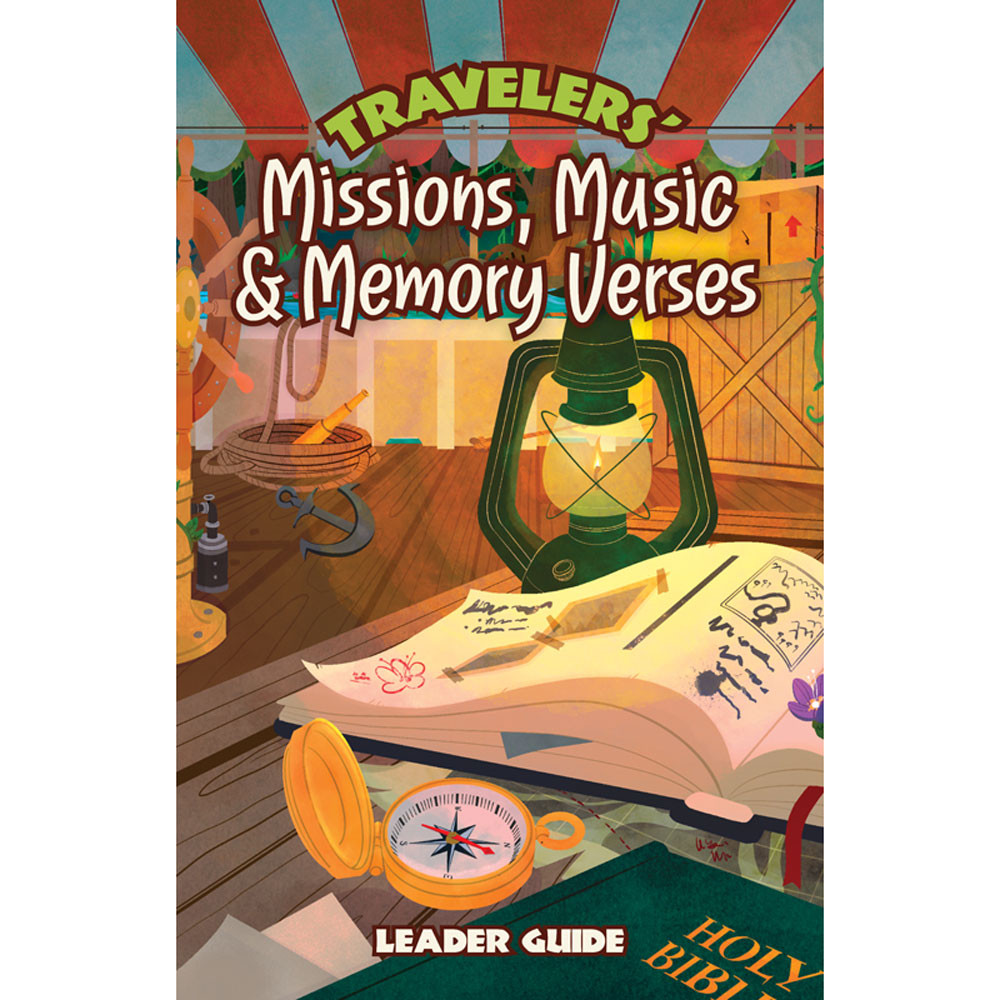
BC Metafield 1
- MISSIONS, MUSIC, AND MEMORY VERSE GUIDE - Missions, Music, and Memory Verse Guide enables you to add one or more of the following to your rotation schedule: missions, music, or memory verse memorization
- INCLUDES - Additional resources to add rotations to your VBS with this booklet.
- SAMPLE IN KIT - A sample of this item is included in the Super Starter Kit and the Super Starter Kit + Digital Pro
- ONE 26-PAGE BOOK
- VBS 2024 - The Great Jungle Journey by Answers in Genesis
Free shipping over $49
Shipping Times
Standard: Arrives in 1-4 business days
Express: Arrives in 2-3 business days
Current Stock: 52
- Create New Wish List
Frequently Bought Together

Total Price:
Please choose options for all selected products
This guide features activities for those who want to incorporate an additional rotation or two. Kids can learn the motions to songs, go in-depth with the mission moment, or spend time hiding God's Word in their hearts.
Related Products

Snacks Sign - Jungle Journey Answers VBS 2024
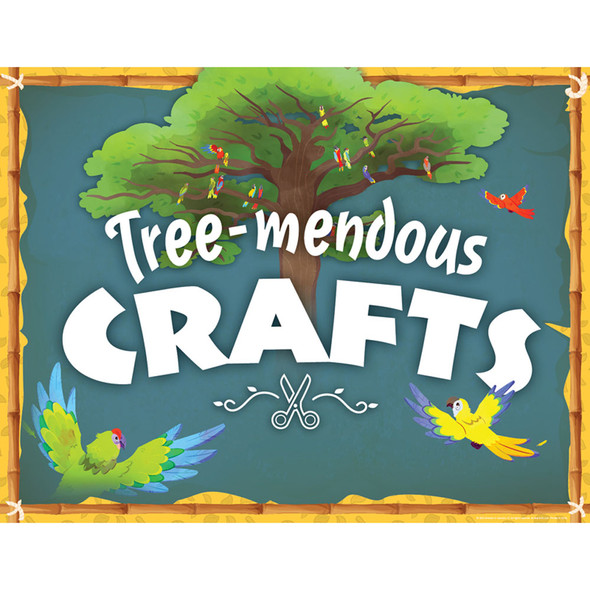
Crafts Sign - Jungle Journey Answers VBS 2024
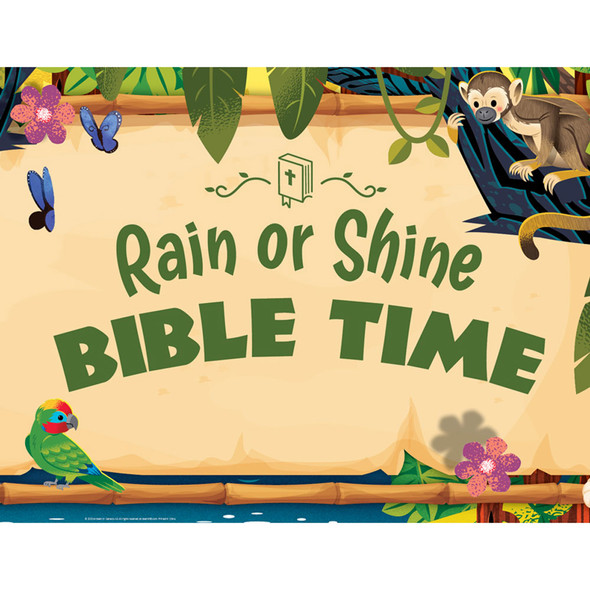
Bible Lesson Time Sign - Jungle Journey Answers VBS 2024

Science Sign - Jungle Journey Answers VBS 2024

Helper Handbook (Pack of 10) - Jungle Journey Answers VBS 2024
The great jungle journey vbs 2024.
It's a jungle out there! At The Great Jungle Journey, kids will sail along on a fun jungle cruise, stopping at seven ports of call-the 7 C's of History: Creation, Corruption, Catastrophe, Confusion, Christ, Cross, and Consummation. Kids will discover how these biblical events shape our world, and they will learn to reconnect the Bible to their everyday lives. They will know their Creator became their Savior!
Prepare to swing into fun as we head out on The Great Jungle Journey!
The Apologetic VBS
How is Answers VBS, the VBS program from Answers in Genesis different? Two words: Real life. In this day and age, it is vital that we teach our children the Bible is more than just a dusty book of stories. We need to show them God's Word connects to every area of life and is just as relevant today as it was thousands of years ago, so they will know its amazing message of salvation is true!
Top Great Jungle Journey Categories
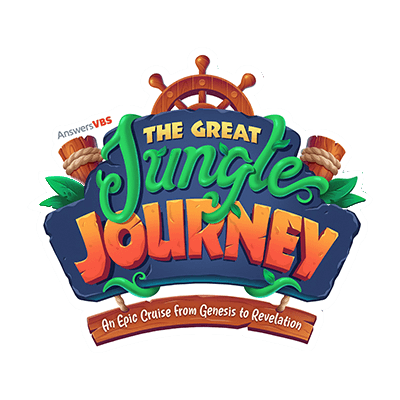
Concordia Rewards
Earn points every time you shop.
*Create an account to automatically enroll or sign in to view your points.
Our Mission
At Concordia Supply, it is our mission to equip churches and ministry leaders with high-quality Christian resources that transform lives for Christ.
How do our memories last a lifetime? New study offers a biological explanation
Ground-breaking research uncovers 'molecular glue' that helps ensure memory formation and stabilization.
Whether it's a first-time visit to a zoo or when we learned to ride a bicycle, we have memories from our childhoods kept well into adult years. But what explains how these memories last nearly an entire lifetime?
A new study in the journal Science Advances , conducted by a team of international researchers, has uncovered a biological explanation for long-term memories. It centers on the discovery of the role of a molecule, KIBRA, that serves as a "glue" to other molecules, thereby solidifying memory formation.
"Previous efforts to understand how molecules store long-term memory focused on the individual actions of single molecules," explains André Fenton, a professor of neural science at New York University and one of the study's principal investigators. "Our study shows how they work together to ensure perpetual memory storage."
"A firmer understanding of how we keep our memories will help guide efforts to illuminate and address memory-related afflictions in the future," adds Todd Sacktor, a professor at SUNY Downstate Health Sciences University and one of the study's principal investigators.
It's been long-established that neurons store information in memory as the pattern of strong synapses and weak synapses, which determines the connectivity and function of neural networks. However, the molecules in synapses are unstable, continually moving around in the neurons, and wearing out and being replaced in hours to days, thereby raising the question: How, then, can memories be stable for years to decades?
In a study using laboratory mice, the scientists focused on the role of KIBRA, or kidney and brain expressed protein, the human genetic variants of which are associated with both good and poor memory. They focused on KIBRA's interactions with other molecules crucial to memory formation -- in this case, protein kinase Mzeta (PKMzeta). This enzyme is the most crucial molecule for strengthening normal mammalian synapses that is known, but it degrades after a few days.
Their experiments reveal that KIBRA is the "missing link" in long-term memories, serving as a "persistent synaptic tag," or glue, that sticks to strong synapses and to PKMzeta while also avoiding weak synapses.
"During memory formation the synapses involved in the formation are activated -- and KIBRA is selectively positioned in these synapses," explains Sacktor, a professor of physiology, pharmacology, anesthesiology, and neurology at SUNY Downstate. "PKMzeta then attaches to the KIBRA-synaptic-tag and keeps those synapses strong. This allows the synapses to stick to newly made KIBRA, attracting more newly made PKMzeta."
More specifically, their experiments in the Science Advances paper show that breaking the KIBRA-PKMzeta bond erases old memory. Previous work had shown that randomly increasing PKMzeta in the brain enhances weak or faded memories, which was mysterious because it should have done the opposite by acting at random locations, but the persistent synaptic tagging by KIBRA explains why the additional PKMzeta was memory enhancing, by only acting at the KIBRA tagged sites.
"The persistent synaptic tagging mechanism for the first time explains these results that are clinically relevant to neurological and psychiatric disorders of memory," observes Fenton, who is also on the faculty at NYU Langone Medical Center's Neuroscience Institute.
The paper's authors note that the research affirms a concept introduced in 1984 by Francis Crick. Sacktor and Fenton point out that his proposed hypothesis to explain the brain's role in memory storage despite constant cellular and molecular changes is a Theseus's Ship mechanism -- borrowed from a philosophical argument stemming from Greek mythology in which new planks replace old ones to maintain Theseus's Ship for years.
"The persistent synaptic tagging mechanism we found is analogous to how new planks replace old planks to maintain Theseus's Ship for generations, and allows memories to last for years even as the proteins maintaining the memory are replaced," says Sacktor. "FrancisCrick intuited this Theseus's Ship mechanism, even predicting the role for a protein kinase. But it took 40 years to discover that the components are KIBRA and PKMzeta and to work out the mechanism of their interaction."
The study also included researchers from Canada's McGill University, Germany's University Hospital of Münster, and University of Texas Medical School at Houston.
This work was supported by grants from the National Institutes of Health (R37 MH057068, R01 MH115304, R01 NS105472, R01 MH132204, R01 NS108190), the Natural Sciences and Engineering Research Council of Canada Discovery (203523), and the Garry and Sarah S. Sklar Fund.
- Intelligence
- Brain Injury
- Neuroscience
- Educational Psychology
- Learning Disorders
- Limbic system
- Memory bias
- Memory-prediction framework
- Computational neuroscience
- Interpersonal relationship
- Competition
Story Source:
Materials provided by New York University . Original written by James Devitt. Note: Content may be edited for style and length.
Journal Reference :
- Panayiotis Tsokas, Changchi Hsieh, Rafael E. Flores-Obando, Matteo Bernabo, Andrew Tcherepanov, A. Iván Hernández, Christian Thomas, Peter J. Bergold, James E. Cottrell, Joachim Kremerskothen, Harel Z. Shouval, Karim Nader, André A. Fenton, Todd C. Sacktor. KIBRA anchoring the action of PKMζ maintains the persistence of memory . Science Advances , 2024; 10 (26) DOI: 10.1126/sciadv.adl0030
Cite This Page :
Explore More
- The Density Difference of Sub-Neptunes
- Antarctic Ice Shelves Hold Twice the Meltwater
- Last Surviving Woolly Mammoths Slightly Inbred
- Common Plastics Passively Cool, Heat, Buildings
- Why U.S. Has So Many Tornadoes
- Wolves Reintroduced to Isle Royale
- We Marry People Who Are Attractive As We Are
- Prehistoric 'Pompeii' Discovered
- How Snowball Earth Kick-Started Our Ancestors
- Simple New Process Stores CO2 in Concrete
Trending Topics
Strange & offbeat.

- June 27, 2024 | Science Made Simple: What Are Photons?
- June 27, 2024 | 600% Boost: Scientists Develop Game-Changing AI Chip With Impressive Energy Efficiency
- June 27, 2024 | NASA’s Curiosity Mars Rover Faces a Particularly Prickly Power Puzzle
- June 27, 2024 | Neuroscience Breakthrough: A Non-Invasive New Therapy for Addiction, Depression, and OCD
- June 27, 2024 | Stopping Measles Cold: Groundbreaking Insights From Cryo-EM
Fear Engrams Unlocked: A Neuroscientific Journey Into Memory and Behavior
By Katherine Gianni, Boston University January 5, 2024
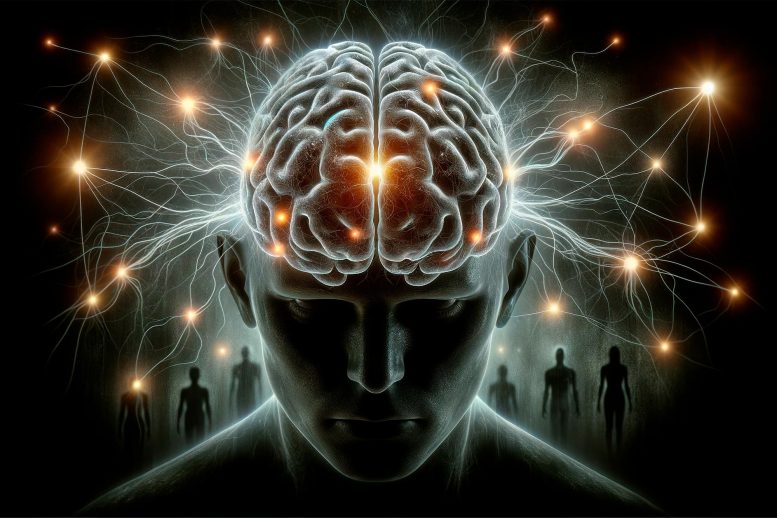
Neuroscientists at Boston University discovered that fear memories in rodents lead to different behaviors depending on the environment’s size. This study, involving optogenetic activation of fear engrams, offers new perspectives on the adaptability of fear responses and potential treatments for fear-based disorders. Credit: SciTechDaily.com
In new research, Boston University neuroscientist Dr. Steve Ramirez and collaborators examine the dynamic nature of fear responses in varied environments and their impacts.
In a world grappling with the complexities of mental health conditions like anxiety, depression, and PTSD , new research from Boston University neuroscientist Dr. Steve Ramirez and collaborators offers a unique perspective. The study, recently published in the Journal of Neuroscience , delves into the intricate relationship between fear memories, brain function, and behavioral responses. Dr. Ramirez, along with his co-authors Kaitlyn Dorst, Ryan Senne, Anh Diep, Antje de Boer, Rebecca Suthard, Heloise Leblanc, Evan Ruesch, Sara Skelton, Olivia McKissick, and John Bladon, explore the elusive concept of fear engrams, shedding light on the physical manifestation of memory in the brain. As Ramirez emphasizes, the initiative was led by Dorst and Senne, with the project serving as the cornerstone of Dorst’s PhD.
Beyond its implications for neuroscience, their research marks significant strides in understanding memory formation and holds promise for advancing our comprehension of various behavioral responses in different situations, with potential applications in the realm of mental health. In this Q&A, Dr. Ramirez discusses the motivations, challenges, and key findings of the study.

Dr. Steve Ramirez. Credit: Photo courtesy of Steve Ramirez
What motivated you and your research collaborators to study the influence of fear memories on behavior in different environments?
The first thing is that with fear memories, it’s one of the most, if not the most, most studied kind of memory in rodents. It’s something that gives us a quantitative, measurable behavioral readout. So when an animal’s in a fearful state, we can begin looking at how its behavior has changed and mark those changes in behavior as like an index of fear. Fear memories in particular are our point because they lead to some stereotyped behaviors in animals such as freezing in place, which is one of many ways that fear manifests behaviorally in rodents..
So that’s one angle. The second angle being that fear is such a core component of a variety of pathological states in the brain. So including probably especially PTSD, but also including generalized anxiety, for instance, and even certain components of depression for that matter. So there’s a very direct link between a fear memory and its capacity to evolve or devolve in a sense into a pathological state such as PTSD. It gives us a window into what’s going on in those instances as well. We studied fear because we can measure it predictably in rodents, and it has direct translational relevance in disorders involving dysregulated fear responses as well.
Can you explain what fear engrams are and how you used optogenetics to reactivate them in the hippocampus?
An engram is this elusive term that generally means the physical manifestation of memory. So, whatever memory’s physical identity is in the brain, that’s what we term an engram. The overall architecture in the brain that supports the building that is memory. I say elusive because we don’t really know what memory fully looks like in the brain. And we definitely don’t know what an engram looks like. But, we do have tips of the iceberg kind of hints that for the past decade, we’ve been able to really use a lot of cutting edge tools in neuroscience to study.
In our lab, we’ve made a lot of headway in visualizing the physical substrates of memories in the brain. For instance, we know that there’s cells throughout the brain. It’s a 3D phenomenon distributed throughout the brain but there’s cells throughout the brain that are involved in the formation of a given memory such as a fear memory and that there’s areas of the brain that are particularly active during the formation of a memory.
What were the main findings about freezing behavior in smaller versus larger environments during fear memory reactivation?
It’s thankfully straightforward and science is often anything but. First, if we reactivate this fear memory when the animals are in a small environment, then they’ll default to freezing–they stay in place. This is presumably an adaptive response so as to avoid detection by a potential threat. We think the brain has done the calculus of, can I escape this environment? Perhaps not. Let me sit in a corner and be vigilant and try to detect any potential threats. Thus, the behavior manifests as freezing.
The neat part is that in that same animal, if we reactivate the exact same cells that led to freezing in the small environment, everything is the exact same: the cells that we’re activating, the fear memory that it corresponds to, the works. But, if we do that in a large environment, then it all goes away. The animals don’t freeze anymore. If anything, a different repertoire of behaviors emerge. Basically, they start doing other things that is just not freezing, and that was the initial take home for us, was that they, when we reactivate the fear memory up, or artificially, when we do that in the small environment, they freeze, when we do that in the large environment, they don’t freeze.
What was cool for us about that finding in particular was that it means that these fear memory cells are not hardwired to produce the same exact response every single time they’re reactivated. At some point, the brain determines, “I’m recalling a fear memory and now I have to figure out what’s the most adaptive response.”
Were there any challenges or obstacles you encountered during the research process, and how did you overcome them?
There’s a couple. The first is that the behavior, ironically enough, was reasonably straightforward for us to reproduce and to do again and again and again–so that we were convinced that there was some element of truth there. In the second half of the study, and the one that probably takes up the most space in the paper, was figuring out what in the brain is mediating this difference. As we observed, the animals are freezing when we artificially activate a memory in a small environment, and they’re not freezing in the large environment. But, we’re activating the same cells. So, what is different about the animal’s brain state? What is the animal’s brain state when we’re reactivating this memory in the small environment compared to the large environment? Clearly it’s manifesting as totally opposite behaviors–freezing and lack thereof.
So, we wanted to find out what in the brain is happening in those two conditions that are different. That led us down a multi-year rabbit hole of trying to map out activity patterns in the entire brain, as a result of stimulating these memories in these different sized environments. We went through a whole mess of technologies where we looked at the brain–we can actually make the brain completely transparent–so that we can take fancy microscopes and image the brain in three dimensions. Think of it as a cellular MRI for rodents. We created these brain wide maps of what’s responsive in the brain when we stimulate a memory. Then we asked ourselves, how does that map of the brain in the small environment compare to the map of the brain when we’re activating the memory in the large environment?
In short, there’s similarities and there’s differences. That there’s certain parts of the brain that are always active when we stimulate a memory, regardless of the environments that the animals are in. But, then there’s other parts that are only active in the large environment or only active when we do the experiment in the small environment. That’s neat because that lets us know that those areas that are not in common between the two might be the ones that are actually important in mediating the brain’s decision to either freeze or to not freeze. However, this process was challenging because it required a lot of technical prowess such as making brains transparent and imaging them in three dimensions down at the cellular level.
How might the insights from this research be applied or extended in the future, particularly in the context of understanding and treating fear-related disorders?
Context clearly matters. One relatable example is that two people might be experiencing the same level of anxiety, but the underlying reason for that anxiety might be wildly different across the two people. The ways that anxiety affects the people behaviorally may also be very different. One person might be pacing up and down the room, whereas the other one is just kind of sitting and lost in their own thoughts. The same faculty of cognition can appear two very different ways, in how it’s expressed. In this case, we think it’s the same thing with fear memories — how they’re expressed will depend on what the animal is experiencing. Perhaps in people, how a given memory is expressed also is going to depend on the context, like the who’s there, the what, where, why, and so on.
So that’s one angle, but I think that the more direct relevance is that we’ve known for a decade that these cells in the hippocampus are enough to jumpstart a memory when we reactivate them. But then there’s the question of, what happens if we reactivate them, and we change up more than just the environment size? If we activate a fear memory, but while an animal is with his rodent buddies in the cage, will that change how that fear memory manifests differently?
In that sense, we hope it gives more of a roadmap on what these experiments can look like, and really build off the idea that we can activate memories and chart out what’s happening throughout the brain in three dimensions. We can use that to try to continue this scavenger hunt of finding targets in the brain for mitigating fear responses.
In terms of broader implications, how could the findings of this study contribute to our understanding of the relationship between memory, brain function, and behavioral responses in various situations?
The biggest take home is that the brain processes a lot of information before a memory is translated into action. I think that for me, one of the most important points is that a thought–and I’m using thought and memory here interchangeably–particularly one linked to a memory, will make us feel all sorts of things associated with that memory. Again, it could be a positive memory, it could be a negative memory, and everything in between, but it doesn’t have to appear the same way. I think it’s a really important point for people to understand, because it serves as a reminder that the process of turning thought into action varies across individuals and what they are experiencing in real time.
Let’s say I was sitting in front of you right now. I could go through the most euphoric memories that I have and the dimmest darkest memories that I have — go through the whole spectrum of emotion from happiness, gleefulness and euphoria to somber, pensive, or sad, the works. But, I could go through all of that without ever really batting an eye, and you would never really know that those are the thoughts that I’m having unless I somehow volunteer that information. But the other thing to consider would be, maybe there’s subtle things happening underneath the hood here that we could pick up on. Maybe when I’m thinking about sad memories I slouch a little bit more, my pupils dilate, or I sweat a little bit more.
Whereas when I recall positive memories, maybe I kind of chipper up a bit, my posture is better, my pupils dilate another way, and my heart rate goes up. There’s other not so obvious metrics for reading out a memory that I think can be used. Ultimately, I hope that this research at least inspires people to dive a bit more deeply into what’s really going on and learn how our memories are ultimately leading to an action. I want to understand the magic that’s happening, and I hope that the study helped unpack a little bit of that magic.
Originally published on Medium .
Reference: “Hippocampal engrams generate variable behavioral responses and brain-wide network states” by Kaitlyn E. Dorst, Ryan A. Senne, Anh H. Diep, Antje R. de Boer, Rebecca L. Suthard, Heloise Leblanc, Evan A. Ruesch, Angela Y. Pyo, Sara Skelton, Lucas C. Carstensen, Samantha Malmberg, Olivia P. McKissick, John H. Bladon and Steve Ramirez, 27 November 2023, Journal of Neuroscience . DOI: 10.1523/JNEUROSCI.0340-23.2023
More on SciTechDaily

NASA to Practice Artemis Moonwalking, Roving Operations in Arizona Desert

A Spooky Ghost of a Giant Star: What Remains After the Explosive Death of a Massive Star

Near-Earth Asteroid 2014 JO25 Set to Fly Past Earth on April 19
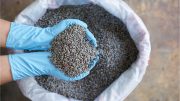
100 Million People at Risk – The Hidden Cost of Soaring Fertilizer Prices
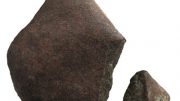
Martian Meteorite Almost 4 Billion Years Younger Than Previously Thought

Shrews Reduce the Size of Their Organs in the Winter

Microscopic Arms Race: Solving the Mystery Behind Bacteria’s Extensive Weaponry

From Alchemists to Astrophysicists: Do Asteroids Hide Superheavy Secrets?
Be the first to comment on "fear engrams unlocked: a neuroscientific journey into memory and behavior", leave a comment cancel reply.
Email address is optional. If provided, your email will not be published or shared.
Save my name, email, and website in this browser for the next time I comment.
- Skip to main content
- Keyboard shortcuts for audio player

- LISTEN & FOLLOW
- Apple Podcasts
- Google Podcasts
- Amazon Music
- Amazon Alexa
Your support helps make our show possible and unlocks access to our sponsor-free feed.
The human brain is hardwired to recognize faces. But what if you can't?

Emily Kwong
Rachel Carlson

Rebecca Ramirez

Freelance science writer Sadie Dingfelder is the author of the new book Do I Know You? , which explores human sight, memory and imagination. Little, Brown Spark, an imprint of Little, Brown and Company hide caption
Freelance science writer Sadie Dingfelder is the author of the new book Do I Know You? , which explores human sight, memory and imagination.
Humans are hardwired to see faces, even in inanimate objects. We have a lima bean-shaped part of our brains dedicated to facial recognition. But this process of seeing a face and recognizing it isn't always straightforward.
Science journalist Sadie Dingfelder is one of 10 million Americans who are face blind, or prosopagnosic . For Dingfelder, that means she struggles to recognize the faces of people she knows and to recall rich memories of who people are.
She was also diagnosed with: aphantasia , which makes it hard to form mental images; severely deficient autobiographical memory, which makes it hard to remember things about her life; and stereoblindness, which means she can't perceive depth with both eyes.
"My memory is very different from neurotypical memories and I have no ability to do that sort of mental time travel," Dingfelder says. "Everything in my life is just a story I may have read... And so in some ways, that makes being a writer the perfect job for me."
Her new book, Do I Know You? came out Tuesday. In the book, she dives into the science of sight, memory and imagination.
Want more episodes on the wonder of the human brain? Email us at [email protected] .
Listen to Short Wave on Spotify , Apple Podcasts and Google Podcasts .
Listen to every episode of Short Wave sponsor-free and support our work at NPR by signing up for Short Wave+ at plus.npr.org/shortwave .
Today's episode was produced and fact-checked by Rachel Carlson. It was edited by Rebecca Ramirez. Kwesi Lee was the audio engineer.
Grandfather, 69, with memory issues found dead days after hospital discharge
PLYMOUTH, Mass. (WCVB) - The family of a 69-year-old grandfather is calling for protocol changes after he was found dead five days after being discharged from a Massachusetts hospital.
Rodney Riviello’s family is planning a celebration of life for the 69-year-old father and grandfather but also looking for answers. The man disappeared last Tuesday after being discharged from Beth Israel Deaconess Hospital in Plymouth, where he was treated for head injuries caused by a fall.
Riviello’s body was found five days later in a salty marshland less than a mile from the hospital. His discharge papers were still in his hand, according to his family.

Members of Riviello’s family say he suffered from some memory issues and was just a few weeks away from celebrating his 70th birthday.
The family said in a statement that a CAT scan at the hospital showed Riviello had “a broken nose and a hematoma from the fall and significant cerebral small vessel disease, which is known to cause dementia.”
“Much to our shock and disappointment, no one ever contacted us or anyone to help a man with no way home,” read the family’s statement.
The hospital says it gave Riviello a cab voucher and is cooperating with investigators. But the family says the 69-year-old had no wallet and no phone.
“He had a series of mini strokes that had done some damage to his brain. So, he doesn’t have a lot of logic and reasoning to make good decisions in order to get himself safely home,” said Riviello’s daughter, Michelle Norris, in an earlier interview.
Riviello’s family believes his death was preventable.
“We hope sharing his story will shed light on gaps in hospital protocols for elderly patients with cognitive issues, and we’re asking for immediate safeguards that require a safe handoff to a family member or caregiver,” the family said.
They plan to meet with state officials in the coming weeks to advocate for new hospital safeguards.
Copyright 2024 WCVB via CNN Newsource. All rights reserved.

Suspects involved in hours-long China Spring standoff identified by authorities

“Pull up”: Woman stabbed after she agreed to street fight; attacker charged, police say

UPDATE: Waco police say missing woman found safe

‘It was pretty amazing’: Central Texas native reflects on journey to becoming George Strait’s keyboardist

Escaped TDCJ inmate recaptured, shot in the arm
Latest news.

Former Uvalde school police chief and officer indicted over Robb Elementary response, reports say

Bronny James, the son of LeBron James, taken by Lakers with 55th pick in NBA draft

McLennan County authorities investigating Speegleville shooting that injured two people

Jury rules NFL violated antitrust laws in ‘Sunday Ticket’ case and awards $4.7 billion in damages

Former Uvalde schools police chief indicted for role in Robb Elementary shooting response
Ben Lively's breakout Guardians season can be added to his collection of fascinating tales
- Starting pitcher Ben Lively might be in the most interesting man on the Cleveland Guardians, and his 2024 season is certainly one of the most surprising.
- Lively reflects on how his father, grandpa and boxing legend Roy Jones Jr. inspired him during his youth in Florida.
- Catchers Bo Naylor and Austin Hedges and pitching coach Carl Willis provide insight into what has been working for Lively on the mound.
CLEVELAND — UFOs , monster fish, interfamily firings and pickup basketball with an all-time boxing great.
Guardians starting pitcher Ben Lively has a collection of entertaining tales, and, in a roundabout way, many of them connect to his surprising 2024 breakout season with Cleveland .
After bouncing around MLB and the minor leagues with a stint in the Korean Baseball Organization, Lively is 7-3 with a 3.03 ERA entering a scheduled start Thursday night at the Kansas City Royals. He had never previously earned more than four wins in a single MLB season.
At age 32, Lively is having the time of his baseball life, and his emergence has materialized at the perfect time for the AL Central-leading Guardians , whose record of 51-27 is second best in the major leagues.
“When you're struggling, when you come [to the ballpark] and no one wants to be here, it's kind of a bummer,” Lively told the Beacon Journal last week. “But when you're playing good, everyone's here having a good time, you never want to leave.”
Follow every MLB game: Latest MLB scores, stats, schedules and standings.
Boat life leaves Cleveland Guardians pitcher Ben Lively with valuable lessons and interesting memories
Lively hails from the Pensacola, Florida, area, where his father, Ed, owns a fishing charter business. Extensive hours on a boat in the Gulf of Mexico are conducive to unusual experiences .
“One of my best friends, his stepdad has a video that's on the History Channel every year,” Lively said. “It's the Chip Holston UFO sighting . He still has the old VHS at the house when I go over there. They had one floating above the house back in the day, and there's always been rumors of sightings in our town. We were fishing one time, we saw a bunch of lights and there's always questions.”
Lively explained he was 13 or 14 years old when he and friends witnessed the mysterious lights. His take on UFOs ? “It's pretty selfish to think that we're the only ones here,” he said.
Massive sea creatures are definitely among us. Marlins, groupers, tuna, you name it, and Lively has either reeled it in or watched someone else do it. He said he once helped catch a 400-pound marlin for a second-place finish in a fishing tournament.
Growing up, Lively surfed and fished on a regular basis. He said he also served as a deckhand for his father, who's typically awake by 4 a.m. and takes customers out on the water anywhere from six hours to two days at a time. He's been doing it for longer than his son has been alive.
“That dude works so hard every day, and it just makes me feel like what I do is so easy,” Lively said. “I have no reason to complain when things are tough for me. It's just like, 'Keep digging.' That's what he always keeps telling me, and it kind of sticks with me when things are going wrong.”
Listed as 6 feet, 4 inches and 235 pounds, Lively said he'll run his own fishing boat after his baseball career, but he has shown the Guardians he's not done yet. In 65⅓ innings this season, the right-handed Lively has allowed 56 hits and 20 walks, hit a batter and struck out 56. His WHIP is 1.16.
“He's a dog,” Guardians catcher Bo Naylor said. “He wants to go out there and compete, and he does that every start, no matter where his pitches are at, which usually they're on par. But you know that you're going to get the same guy every time, someone who's going to go out there and really just go and try to attack the zone.”
Lively has traveled a long, winding road toward MLB success. He spent the 2020 season and parts of 2019 and 2021 playing in Korea, where he had to prop up a mattress in his apartment and throw weighted balls against it to train amid COVID-19 restrictions.
“It's taken him a while, and it's taken him [several] organizations, a trip overseas,” Guardians pitching coach Carl Willis said. “I think first and foremost, not everyone can survive all of that and still get meaningful opportunity at this level, so it speaks volumes of his perseverance and confidence in himself.
“I also think that once you go through all that pathway, you come to the realization that all you can do is the best that you can do. You can't do more than your best. If you just go out with the idea, 'I'm going to do the best I can do and the chips are going to fall where they may,' I think what we see from Ben and having that attitude is there's no fear. He attacks the strike zone without fault.”
Cleveland baseball player Ben Lively is driven to honor the memory of his grandfather
Lively has drawn inspiration from his dad and others while navigating a journey filled with detours.
He credits his late paternal grandfather, Jim Lively, with introducing him to baseball at the age of 3 and coaching him on and off until he reached Gulf Breeze High School. In 2010, Cleveland drafted him in the 26th round after his senior year, yet he opted to pitch at the University of Central Florida. He bolstered his draft stock enough to be picked by the Cincinnati Reds in the fourth round in 2013.
As Lively's career took him from the Reds to the Philadelphia Phillies (who gave him his MLB debut in 2017) to the Royals and back to the Reds last season, with the minor leagues always in the mix, his grandpa would call him after virtually every game to offer coaching tips.
Jim Lively died last summer at the age of 81. Lively pointed to playing for his grandfather as “probably my top” motivation. He also said he believes his grandpa is proud of the season he's assembling with the Guardians.
“When I was growing up, I was the kid that threw fits when things didn't go my way,” Lively said. “[My grandpa] used to send me to the car during the game. He'd be coaching and send me to the car.”
Jim Lively could dish out tough love. He worked at Panasonic and eventually opened a seafood restaurant called Dolphins on the Bay, where Lively's parents met as co-workers and his grandmother, Joyce, shucked oysters with blazing speed.
“My grandpa actually fired my mom twice,” Lively said with a laugh. “Grandma kept bringing her back.”
How boxing legend Roy Jones Jr. influenced Guardians pitcher Ben Lively during his youth
Ed and Ginny Lively's son dabbled in sports other than baseball. At age 15 or 16, he played in a men's basketball recreation league with fellow Pensacola native and boxing icon Roy Jones Jr. Being in the presence of a legend left an impression.
“You see someone that good and you see the way they carry themselves and you kind of want to do that at a young age,” Lively said. “You're, like, 'This guy's badass. He'll beat the s*** out of you.'”
Although Lively hasn't dominated his sport at the highest level like Jones, he said he has figured out a routine this season to bounce back and prepare well before each outing after oscillating between starting rotations and bullpens at previous stops.
“I definitely probably put a lot more pressure on myself early in my career,” Lively said. “Now it's definitely more relaxed, having a lot more fun and just knowing what I need to do every single day.
“I feel like everyone goes through those ups and downs throughout their life, no matter what career you're doing. You're going to learn from everything. You've just got to separate it and push through.”
DJ Diesel in Cleveland: Shaquille O'Neal gets Guardians on stage during concert and asks key question: 'Can we make it to the World Series?'
Ben Lively stepped up as a starting pitcher for the Cleveland Guardians amid injuries to Shane Bieber and Gavin Williams
Lively pushed through at a crucial juncture for the Guardians after they signed him in December to a one-year, $750,000 contract, according to USA TODAY's annual salary report .
The Guardians lost ace Shane Bieber for the season in early April to Tommy John surgery. Starter Gavin Williams began the season on the injured list with elbow discomfort and is still working his way toward a 2024 debut with Cleveland.
“With Bieber getting hurt to start the year, you lose arguably the best pitcher in baseball, and you've got to replace him,” Guardians catcher Austin Hedges said. “The second [Lively] came in to kind of fill in that last spot in our rotation, he has turned into being one of our more reliable guys.
“He just knows exactly who he is and doesn't really care who he's facing or what the moment is. He knows he's got two special fastballs, four-seam and two-seam, and he knows that he can throw those to a bunch of different locations at any time. He's just evidence that command of a fastball is one of the best weapons you can have.”
Willis said he spoke to Reds pitching coach Derek Johnson during spring training and received positive feedback about Lively in the clubhouse and on the field. The endorsement carried weight.
“He has a unique stroke and arm slot where his approach angle you see his fastball typically 89 to 91 [mph], yet the swings you see against his fastball are more like swings you're going to see against 94 to 96,” Willis said. “There's just some deception there where hitters don't pick up the baseball maybe as soon as they do against some other pitchers, and the velocity plays up. He has the ability to sink the ball and throw a four-seamer, and then with two breaking pitches it just makes it a really tough at-bat.”
Although Lively is intense on the mound, he is known for his sense of humor off it. When a New York Mets play-by-play announcer misspoke during a broadcast last month by referring to Lively as actress Blake Lively , the Guardians pitcher got a kick out of the gaffe, adding he's heard related jokes since his college days.
“You've got to be laid back,” he said, “and let things pass as quick as they show up.”
The approach is paying off more than a decade after Lively entered the Reds farm system.
“It doesn't happen for everybody when they're 22, 23 years old,” Hedges said. “Sometimes it happens a little bit later, but it's never too late to get it going.”
This season might be Lively's most fascinating tale yet.
More Guardians coverage: Here's how Cleveland's starting rotation has been a case of give-and-take
Nate Ulrich can be reached at [email protected]. On Twitter: @ByNateUlrich .

Birth: 1944
Death: 2023
Kathleen Zalecki OBITUARY
In loving memory of Kathleen Zalecki, a compassionate soul whose life was a testament to love, dedication, adventure, and resilience. Born Mary Kathleen Wall on September 18th, 1944, in Oak Park, IL, Kathleen’s life was a journey marked by profound kindness and unwavering love for her family, her friends, and the outdoors.With her family, Kathleen settled in the San Francisco Bay Area. In midlife she courageously sought a college education, first earning her B. A. at Dominican College and then her M. A. in social work at U. C. Berkeley. As a devoted clinical social worker at the San Francisco V. A., Kathleen touched countless lives with her limitless compassion and tireless support. Kathleen found joy and adventure in the embrace of nature. An avid cyclist and hiker, she reveled in the beauty of the world around her, whether it was amidst the rolling hills of the Bay Area or the winding roads of Ireland. She uplifted her riding and hiking companions with her enthusiasm and happiness for sharing what she loved with others. Above all else, Kathleen’s greatest joy was her family. A devoted mother, grandmother, sister, and cousin, she cherished every moment spent in their company, showering them with boundless love, warmth, and laughter. Although her memory and recognition of her loved ones faded after she was struck with Alzheimer’s Disease in her early 60’s, the glint in her eye and the smile on her face when surrounded by family showed that her devotion to them and her delight in their presence never faded. With her children at her side, Kathleen took her last breath on October 27th, 2023, in Corte Madera, CA after her long-fought battle with Alzheimer’s disease. Her legacy of love, compassion, and resilience will forever endure in the hearts of those she left behind.Kathleen is survived by her children, Steve, Chris, and Denise; Denise’s partner Ben; Kathleeen’s son-in-law Mohammed; daughter-in-law Raquel; grandchildren Spencer, Wyatt, Pierce, Tessa, and Rachel; her former husband Justin; and her cousins Pat, Patti, and Larry. She was preceded in death by her brothers, Gerald and Tom, and her parents, Kay and Frank. A celebration of Kathleen’s life will be held at Fernwood Cemetery in Mill Valley, on July 19th at 1:00. In lieu of flowers, her family requests that donations be made to the Alzheimer’s Association.
Honor with Flowers
In memory of Kathleen
Plant a Living Memorial

IMAGES
VIDEO
COMMENTS
The Journey Technique is an ancient memory method that lets you store new information within familiar mental journeys, allowing you to navigate it with ease. You could use your journey to work, for example; the route you take to visit your parents; or a tour around a regular holiday destination.
The method of loci is a strategy for memory enhancement, which uses visualizations of familiar spatial environments in order to enhance the recall of information. The method of loci is also known as the memory journey, memory palace, journey method, memory spaces, or mind palace technique.This method is a mnemonic device adopted in ancient Roman and Greek rhetorical treatises (in the anonymous ...
memory techniques; the journey method; The Journey Method. The journey method is a powerful, flexible and effective mnemonic based around the idea of remembering landmarks on a well-known journey. In many ways it combines the narrative flow of the Link Method and the structure and order of the Peg Systems into one highly effective mnemonic.
This is what is most often called the Memory Palace technique. Sometimes it is called either the method of loci or the Roman Room method. Some people consider using buildings a subset of the Journey Method. Others simply divide the two. If the journey is outside, they call it the Journey Method.
The Journey Method The journey method is based on using landmarks on a journey that you know well. This journey could, for example, be your journey to work or school in the morning, the route you use to ... To retain information in long-term memory, reserve a journey for that specific information only. Occa-sionally travel down it in your mind ...
The Link Method is an age-old memory technique for remembering lists. It works by turning information into vivid images, then linking those images together in memorable ways. The Story Method is similar. It also relies on images, but this time the images are connected together as an engaging and memorable story.
If you want to use the journey method, you might be wondering:What's the difference between this memory technique and the Roman Room, Memory Palace, Mind Pal...
A memory journey could consist of something as simple as a stroll through your own house. You know it well already, so memorising it is child's play. It could be a stroll around your neighbourhood. You know the streets, the shops, the crossings, the buildings, maybe a railway bridge or a park, a church or a statue, all kinds of things.
Most people would probably answer that a memory palace is a type of memory journey, but not all memory journeys are memory palaces. I like Lynne Kelly's term, "memory spaces". (See The Memory Code.) tracym November 16, 2017, 10:59pm 3. In practice, they're about the same. For example, in and and around my house I have 85 loci total. 60 ...
The Journey Method. The basic principle of the journey method is to imagine a journey and place items you want to remember along the way. Choose a route which you are very familiar with and which has a certain number of distinctive objects. I want to stress this part - the objects (or places) should be really distinctive.
About the journal. Articles in the Journal of Memory and Language contribute to the formulation of scientific issues and theories in the broad areas of memory and language ( learning, comprehension and production ). The journal's focus is on describing the mental processes that underpin these capacities. Special …. View full aims & scope.
That is, the mental journey to the future and thinking about our plans and desires can be a way of coping with adversity (Ballance et al., 2022; Lalla & Sheldon, 2021; Szpunar et al., 2012). In fact, research has highlighted the adaptive value of memory by allowing people to prepare for the future (Schacter & Addis, 2007; Szpunar et al., 2012).
Learn how memories are formed, stored and retrieved in the brain, and what neuroscience experiments have revealed about this complex process in this engaging article from BBC Science Focus Magazine.
Learning and Memory -- A Long-Term Journey. Neuroscientist Roger Nicoll, pictured here with graduate student Kaiwen Kam, is an award-winning researcher who has made crucial discoveries about how nerve cells communicate and change with learning and memory. "If you really want to understand the brain, you have to take the top off and look ...
Joyful Journey is MUSIC & MEMORY (M&M) certified, offering individualized, personalized music to our Friends. Those Friends who would benefit from this very special form of music therapy are provided an iPod with his/her own personal music playlist loaded onto it. With help from Friend's family members, Staff and Volunteers, our M&M Team will ...
A journey by the author, Dougie Strang on a figure of eight trip round a section of Scotland. He starts on the bright days of early October and finishes as the first frosts silver the ground. It is a book rooted in the past, present and future. With commentaries on landscape, myth, legend, pollution, renewable energy, fish farms, the clearances ...
Older adults may worry about their memory and other thinking abilities, such as taking longer to learn something new. These changes are usually signs of mild forgetfulness — or age-related forgetfulness — and are often a normal part of aging. However, more serious memory problems could be due to mild cognitive impairment, dementia such as ...
This journey is a dynamic and iterative process as prior purchase cycles influence subsequent customer experiences (Lemon and Verhoef, 2016). To assess the quality of the customer experience, EXQ was developed by Klaus (2014) and later validated by Kuppelwieser and Klaus (2021) to capture this experience through all three stages of a single ...
In both tasks, memory errors were accompanied by a decline in journey codes. The different dynamics of place and journey coding suggest that they reflect separate mechanisms and contribute to distinct memory computations. Stable place fields may represent familiar relationships among environmental features that are required for consistent ...
The memory palace, also known as the memory journey, is a mnemonic technique where information to be remembered is encountered along a predetermined path through envisioned places, creating strong spatial and visual connections between the material and specific locations and vivid images. Constructing a memory palace for complex computer ...
In four studies, we examine the "LIFE IS A JOURNEY" conceptual metaphor using as data output from semantic and episodic memory. In the first three studies output from semantic memory indicates that undergraduate samples, when primed to think in "LIFE" in terms of a course followed until one's 70th year, provided a set of events output in a sequential order and when compared to a second sample ...
This Item: Missions, Music, and Memory Verses Guide - Jungle Journey Answers VBS 2024. $9.99. Description. This guide features activities for those who want to incorporate an additional rotation or two. Kids can learn the motions to songs, go in-depth with the mission moment, or spend time hiding God's Word in their hearts. Additional Information.
A new study by a team of international researchers has uncovered a biological explanation for long-term memories. It centers on the discovery of the role of a molecule, KIBRA, that serves as a ...
In loving memory of Brent Sprott, a cherished friend who departed from us too soon, we gather to honor his life and memory. Brent was so much more than a friend. He was a beacon of fellowship and generosity to all who knew him. His infectious humor and unwavering support brightened so many lives, leaving an indelible mark on all our hearts.
Fear Engrams Unlocked: A Neuroscientific Journey Into Memory and Behavior. Neuroscientists at Boston University discovered that fear memories in rodents lead to different behaviors depending on the environment's size. This study, involving optogenetic activation of fear engrams, offers new perspectives on the adaptability of fear responses ...
One reporter's journey with face blindness : Short Wave Humans are hardwired to see faces — even in inanimate objects. We have a lima bean-shaped part of our brains dedicated to facial recognition.
Members of Riviello's family say he suffered from some memory issues and was just a few weeks away from celebrating his 70th birthday. The family said in a statement that a CAT scan at the ...
Cleveland baseball player Ben Lively is driven to honor the memory of his grandfather. Lively has drawn inspiration from his dad and others while navigating a journey filled with detours.
My Memory wasn't what it used to be Upon returning from that particular deployment, I noticed something was wrong with my memory and it felt like it was getting worse as time went on. I sought medical advice, and at that time, TBI treatment and attention weren't at their peak, so the only answer I received then was to find ways to cope.
In loving memory of Kathleen Zalecki, a compassionate soul whose life was a testament to love, dedication, adventure, and resilience. ... 1944, in Oak Park, IL, Kathleen's life was a journey ...